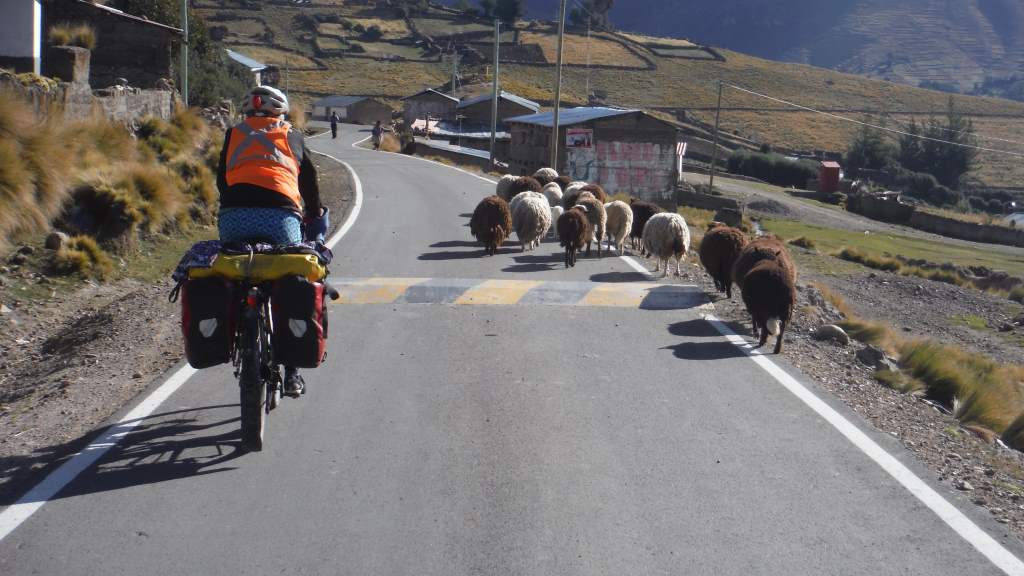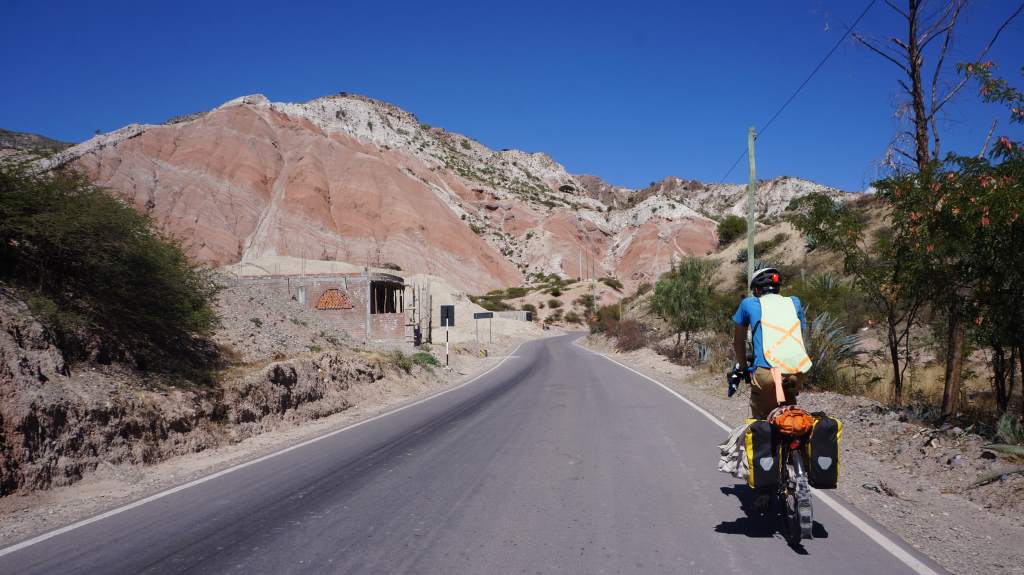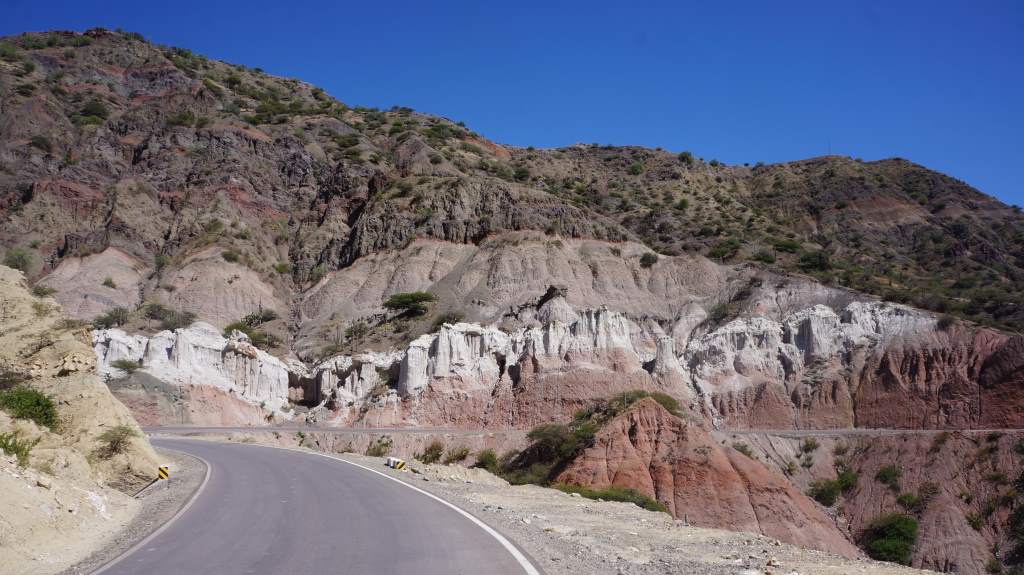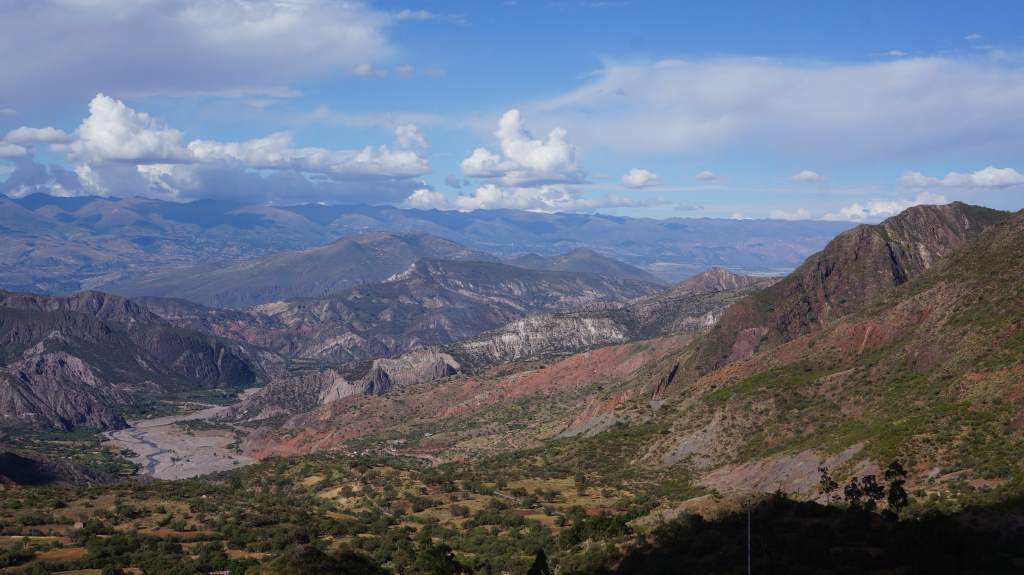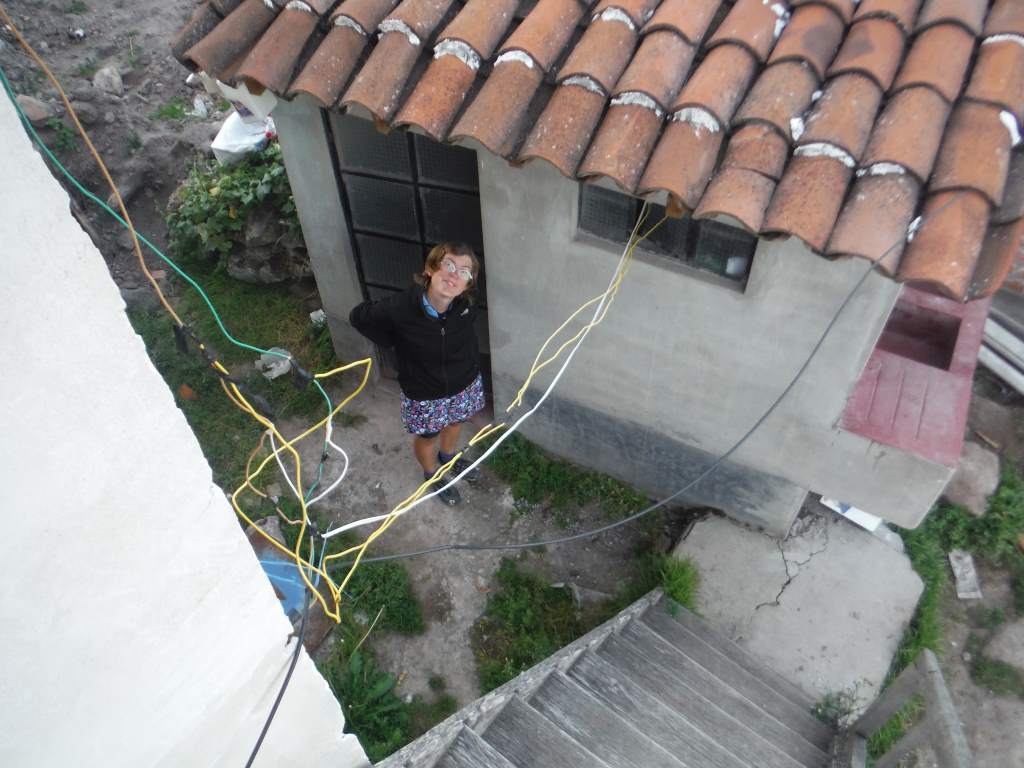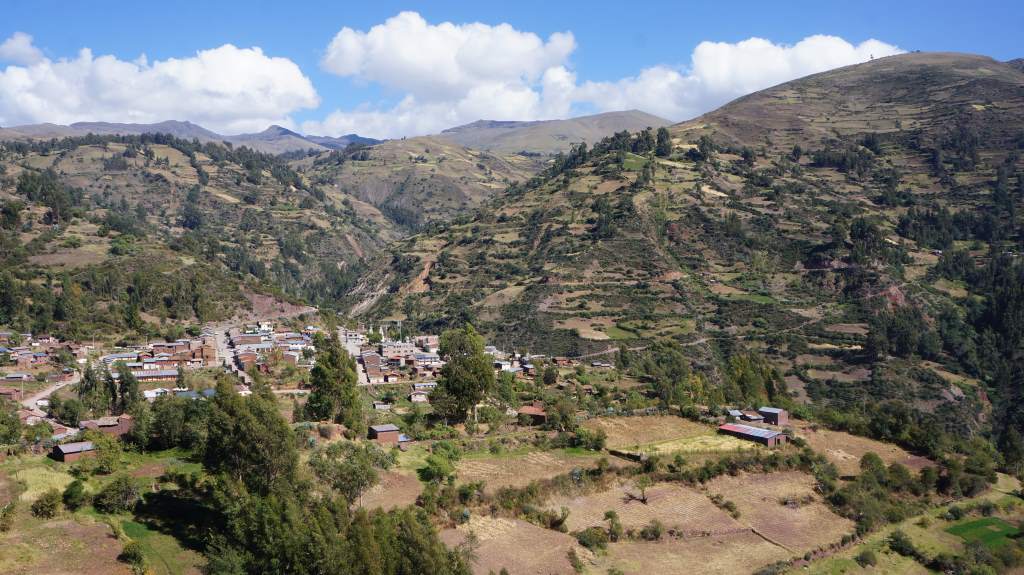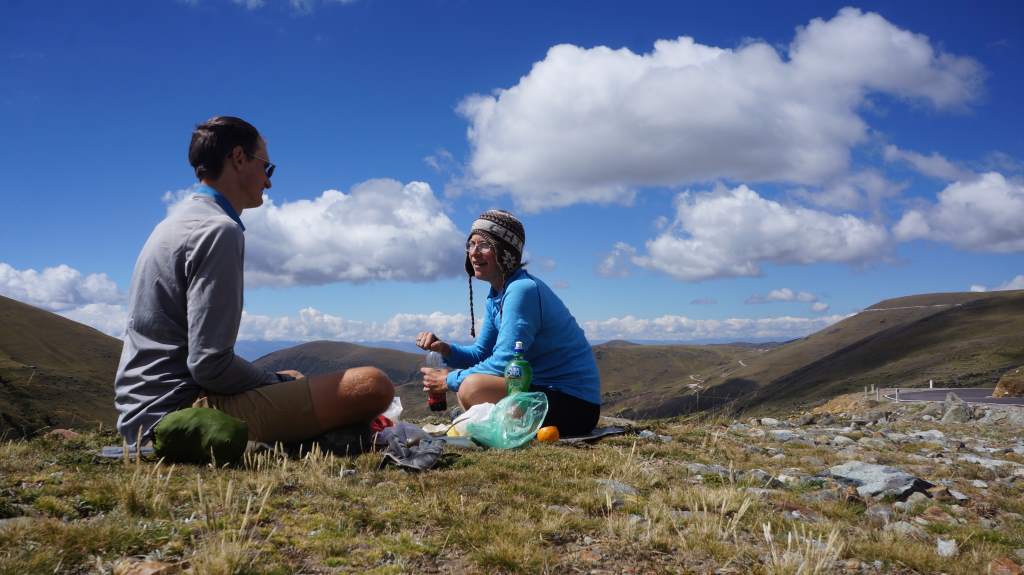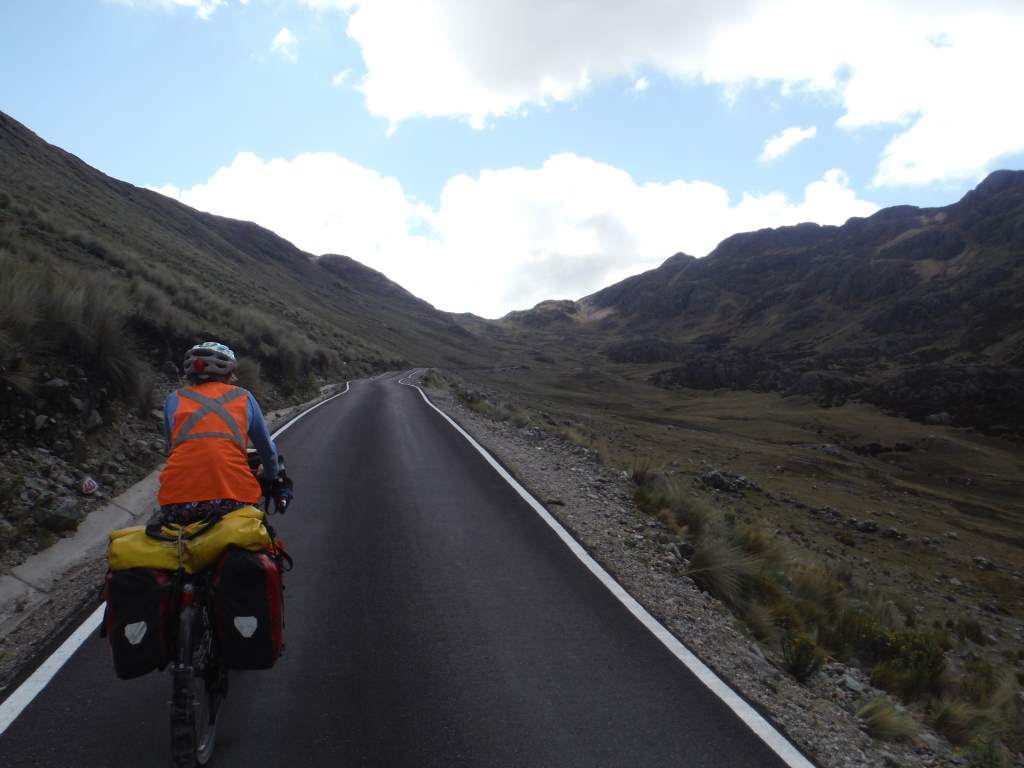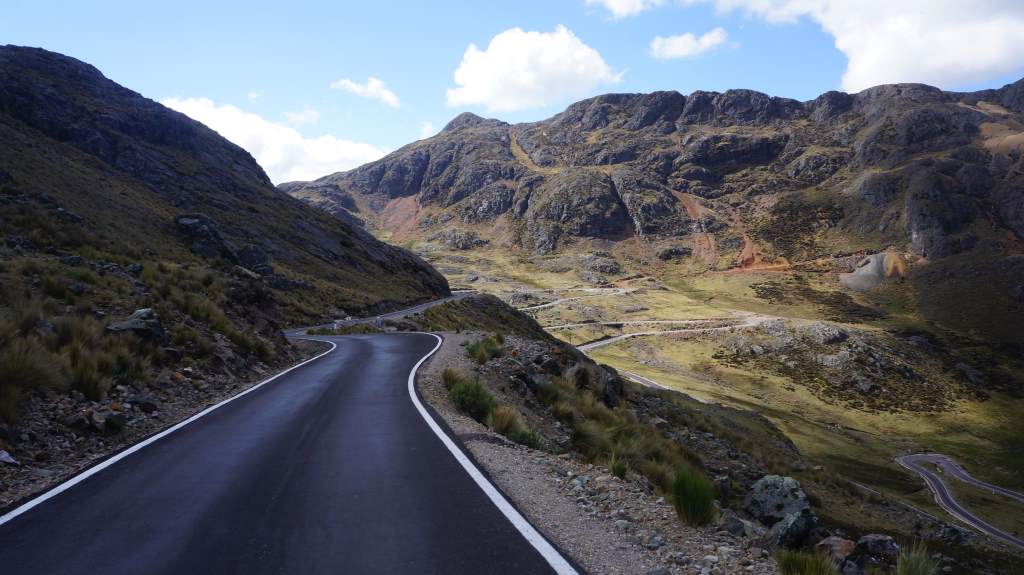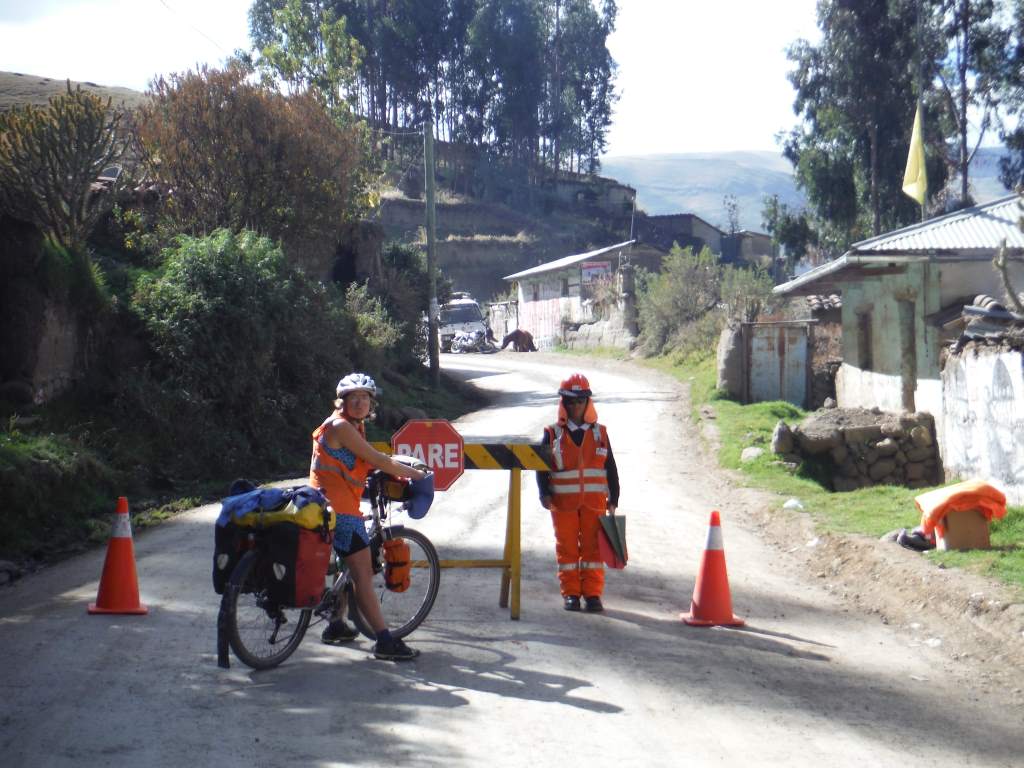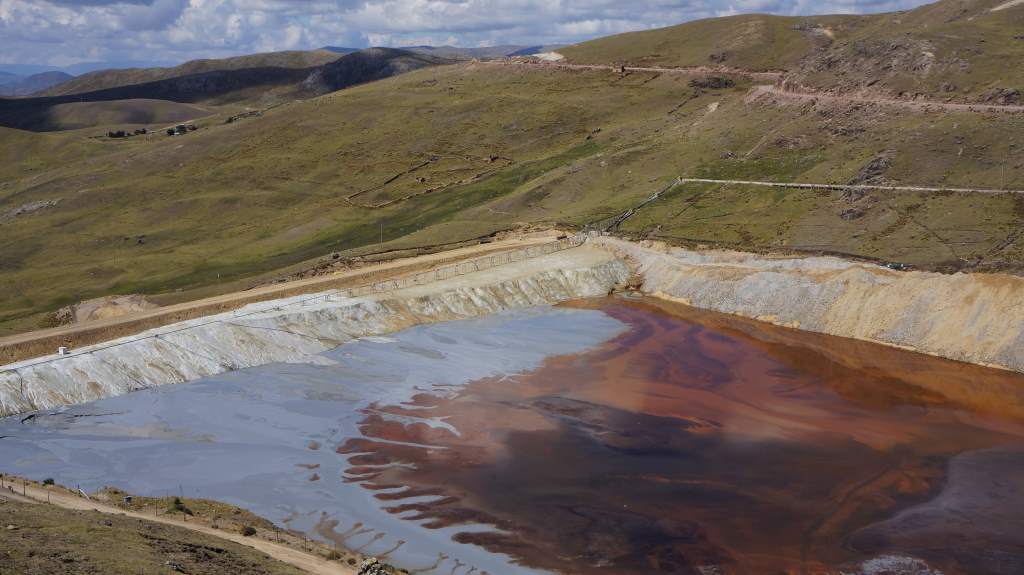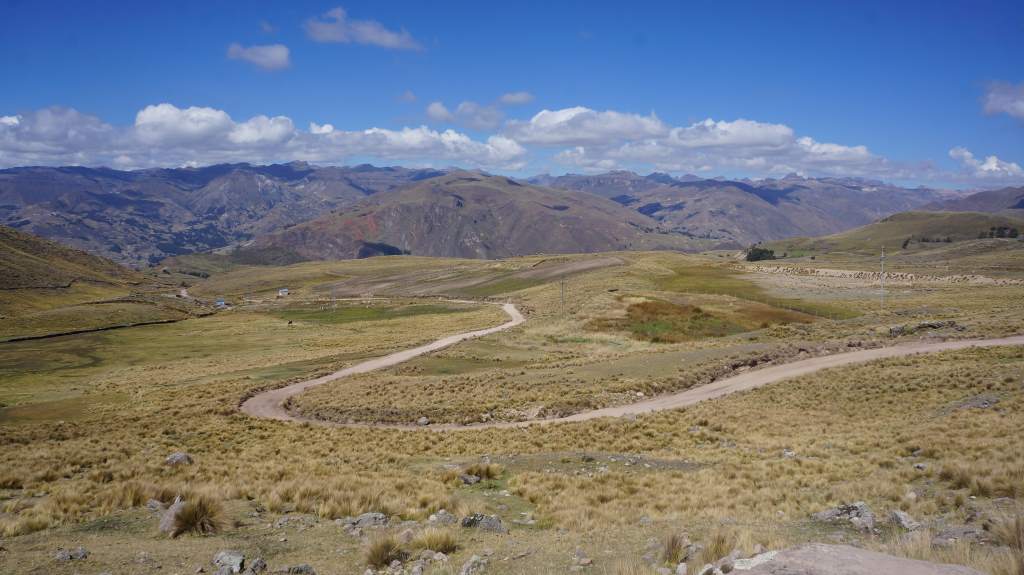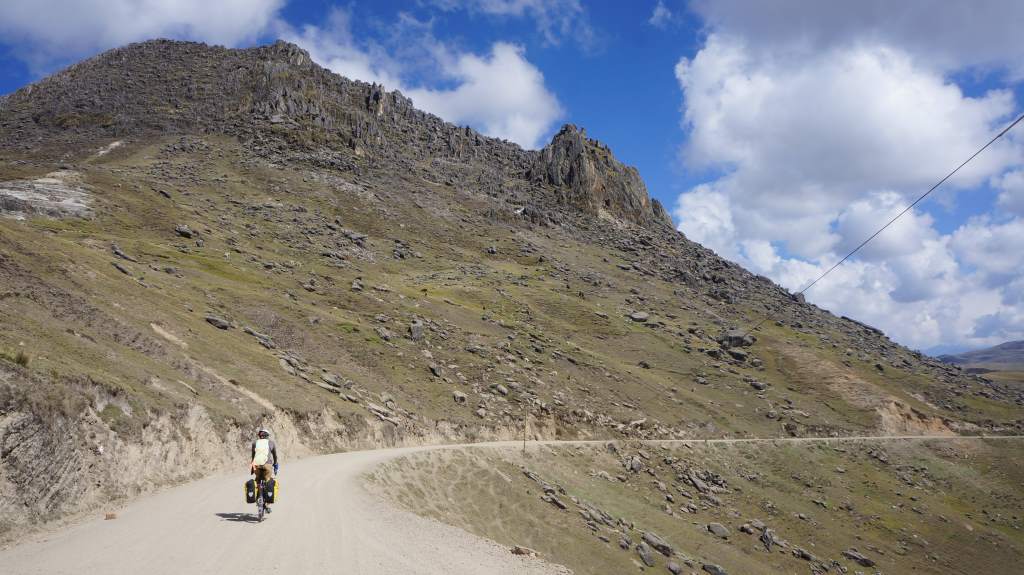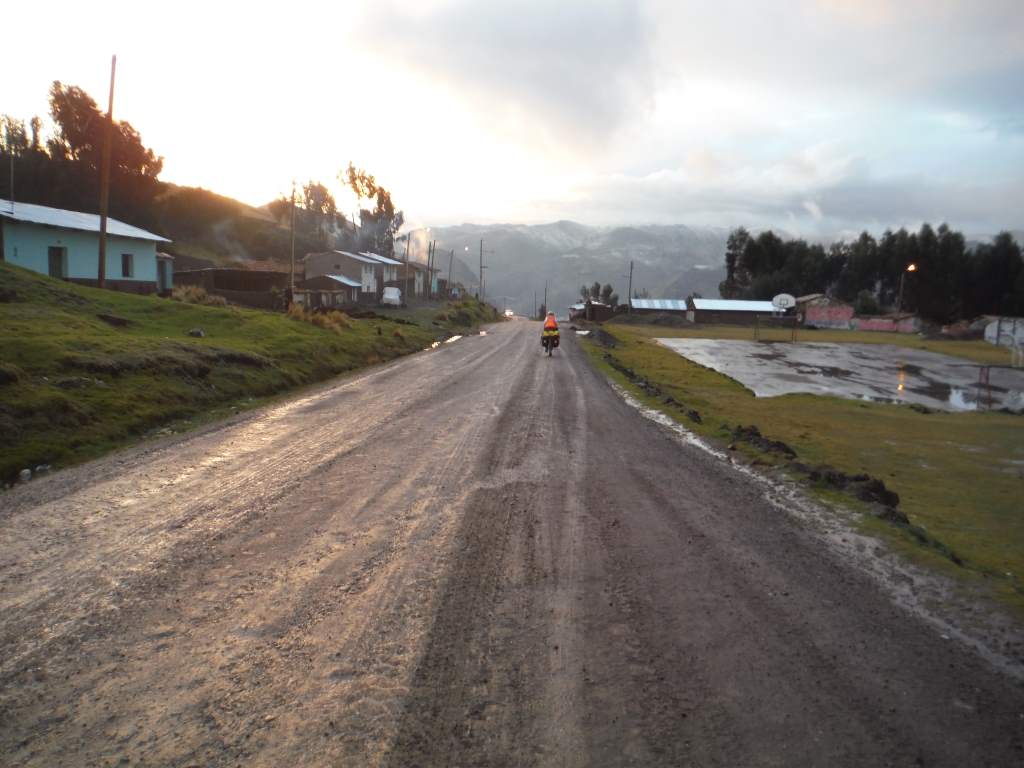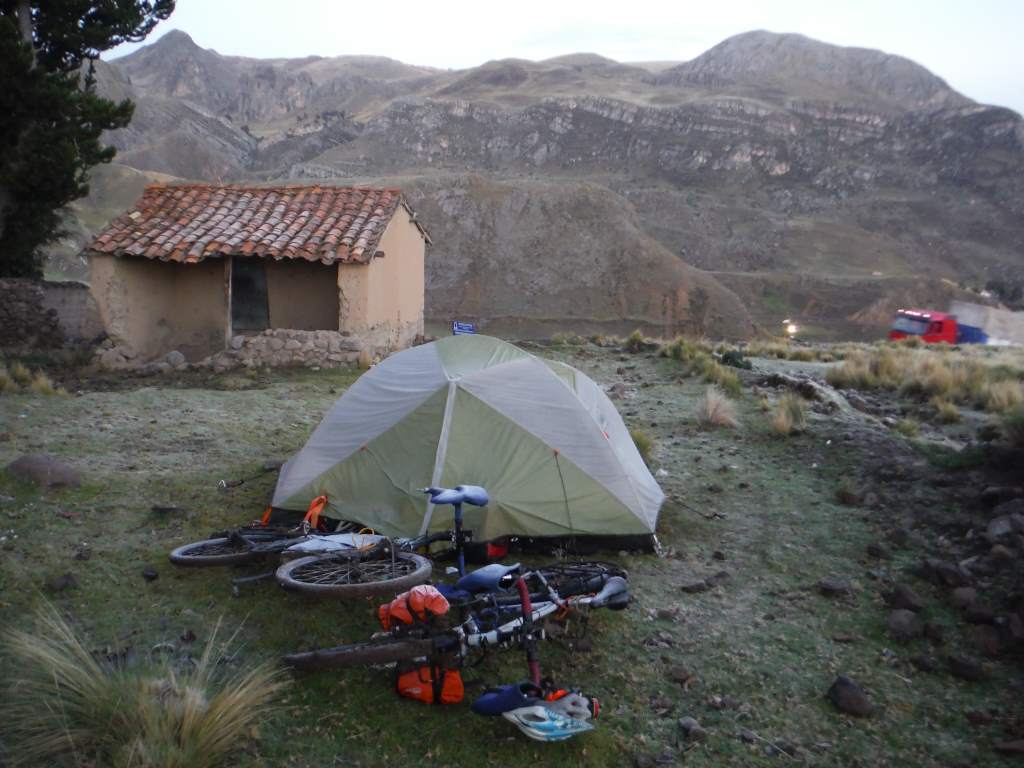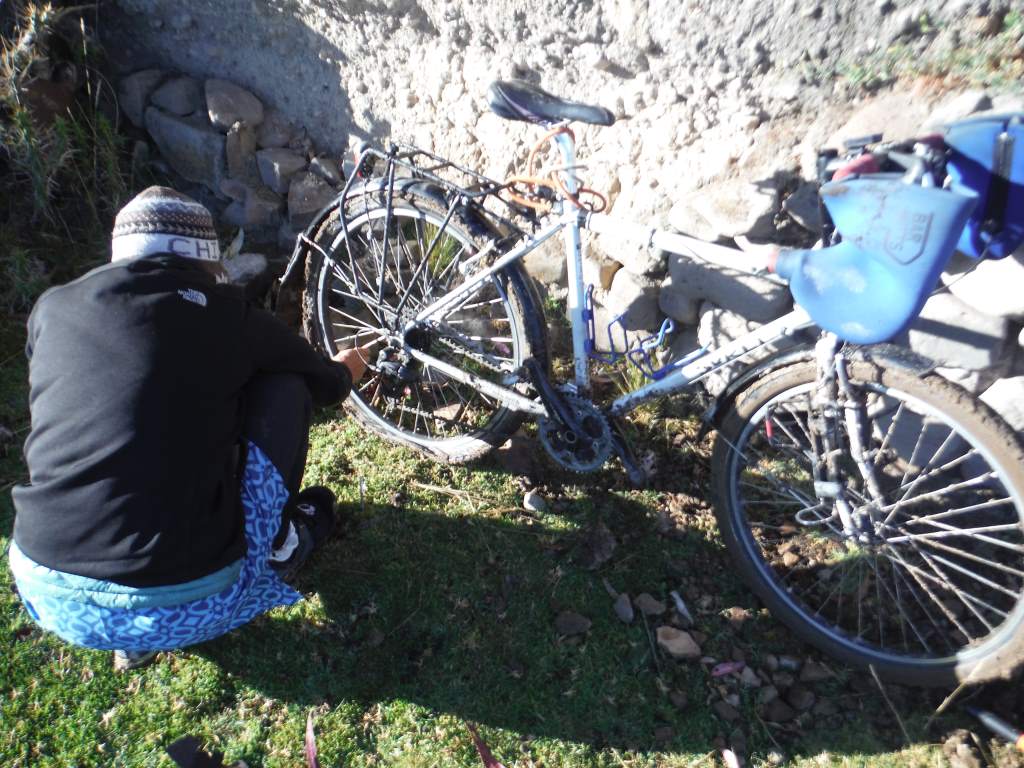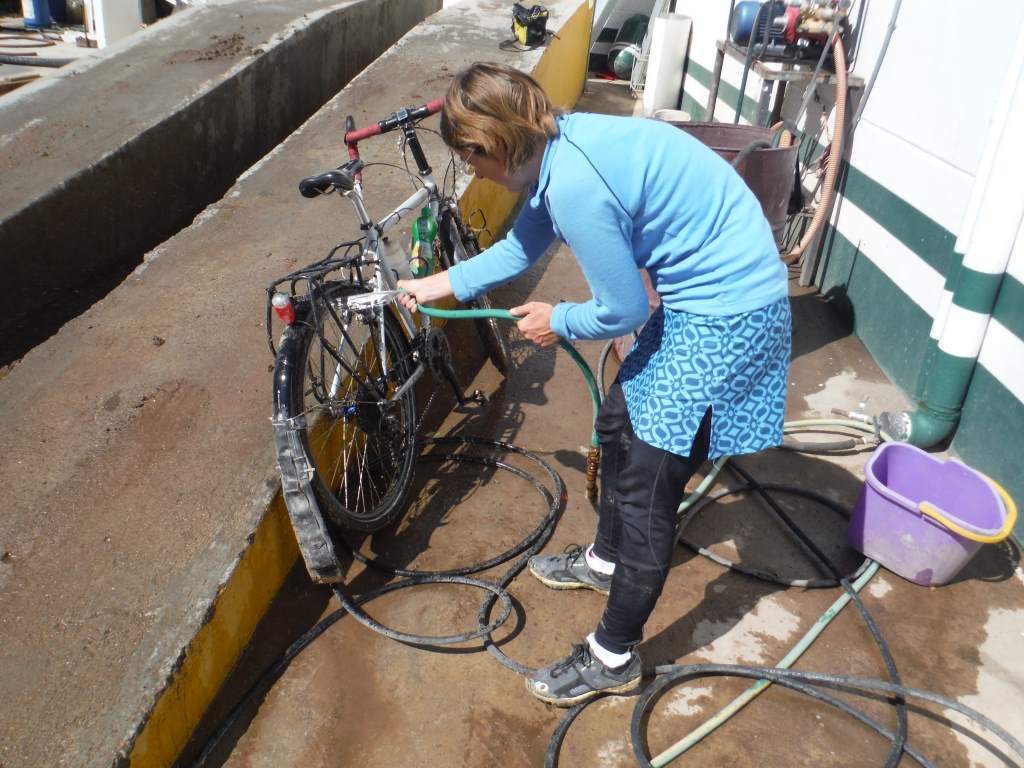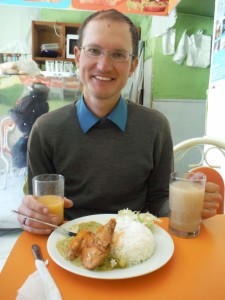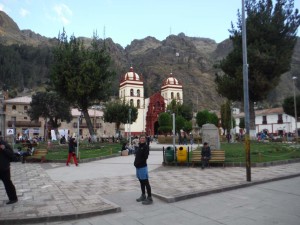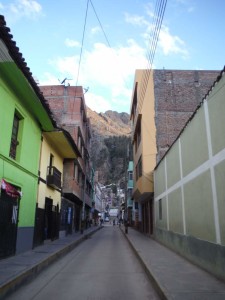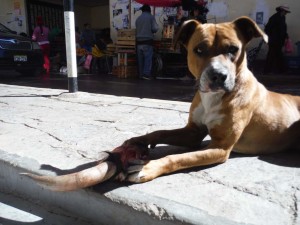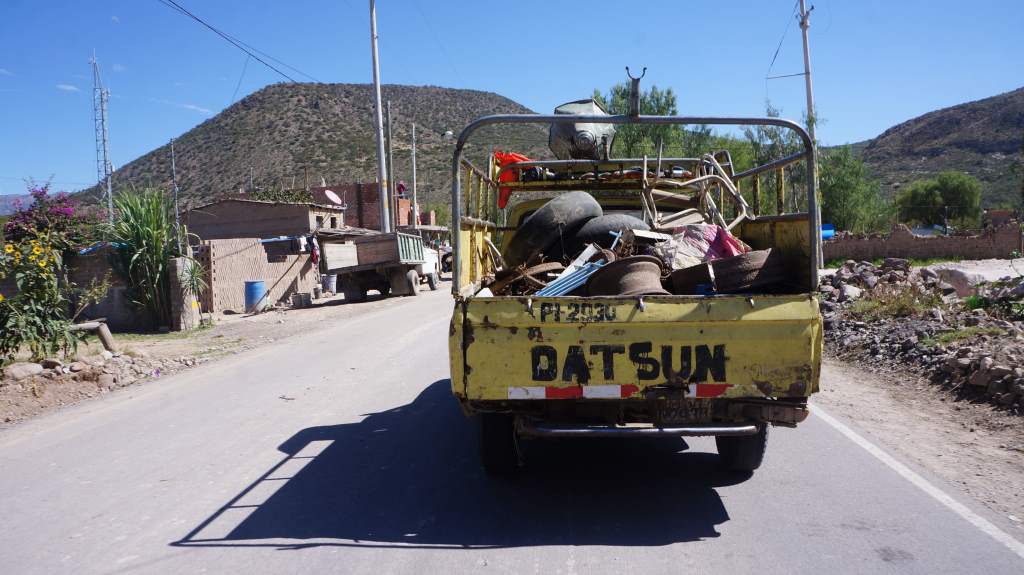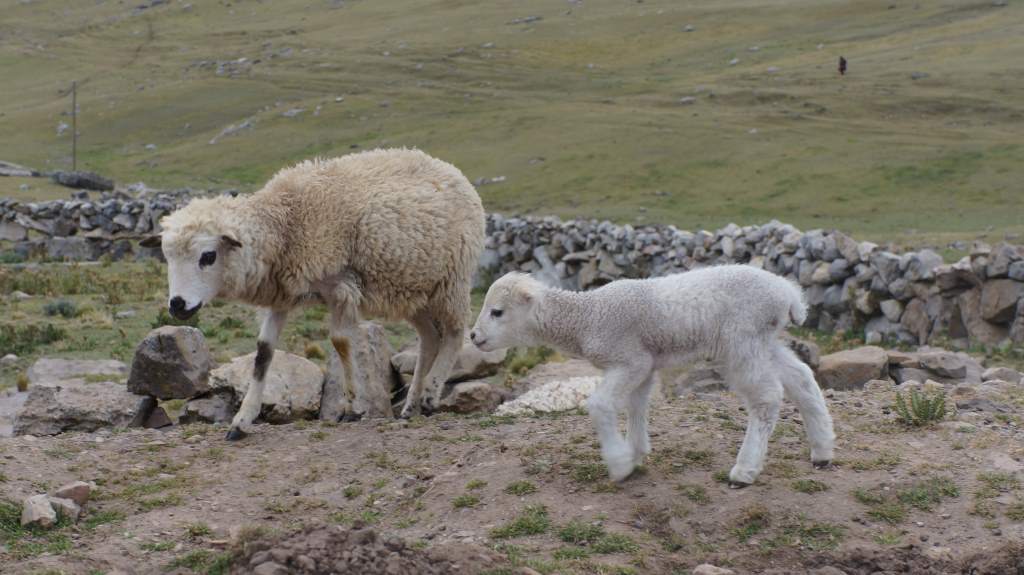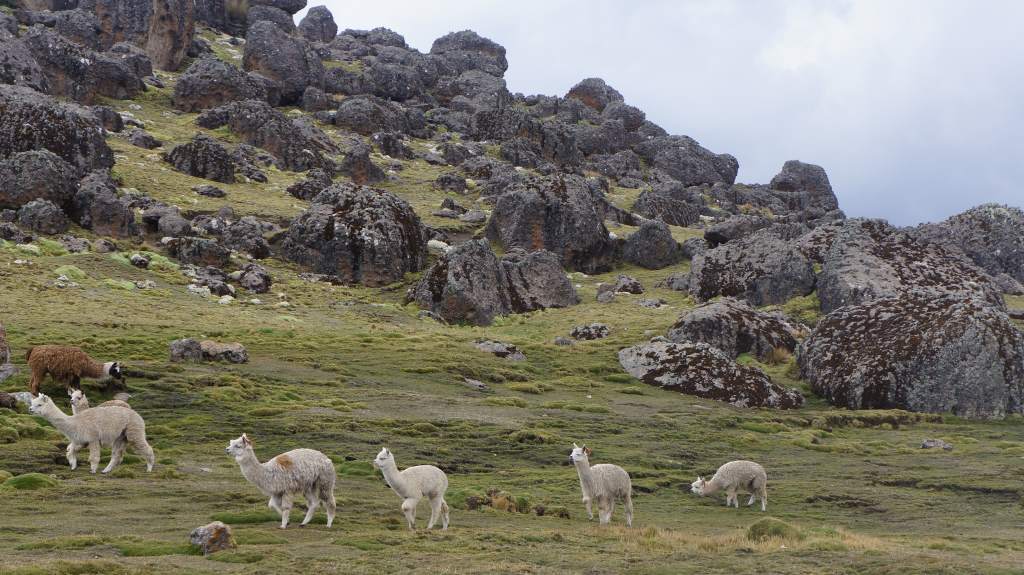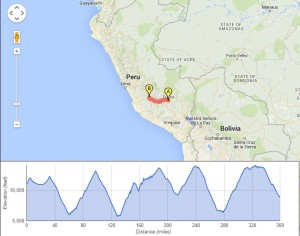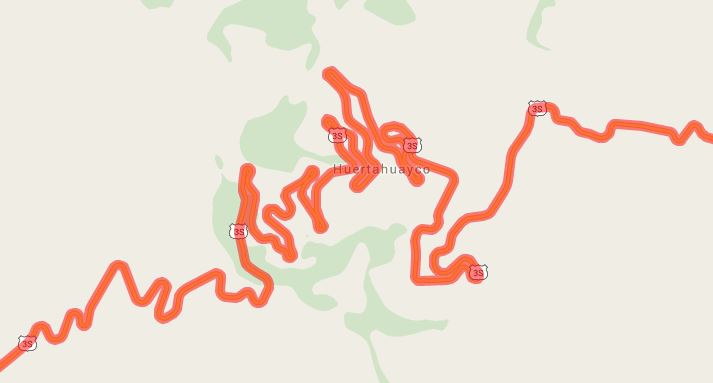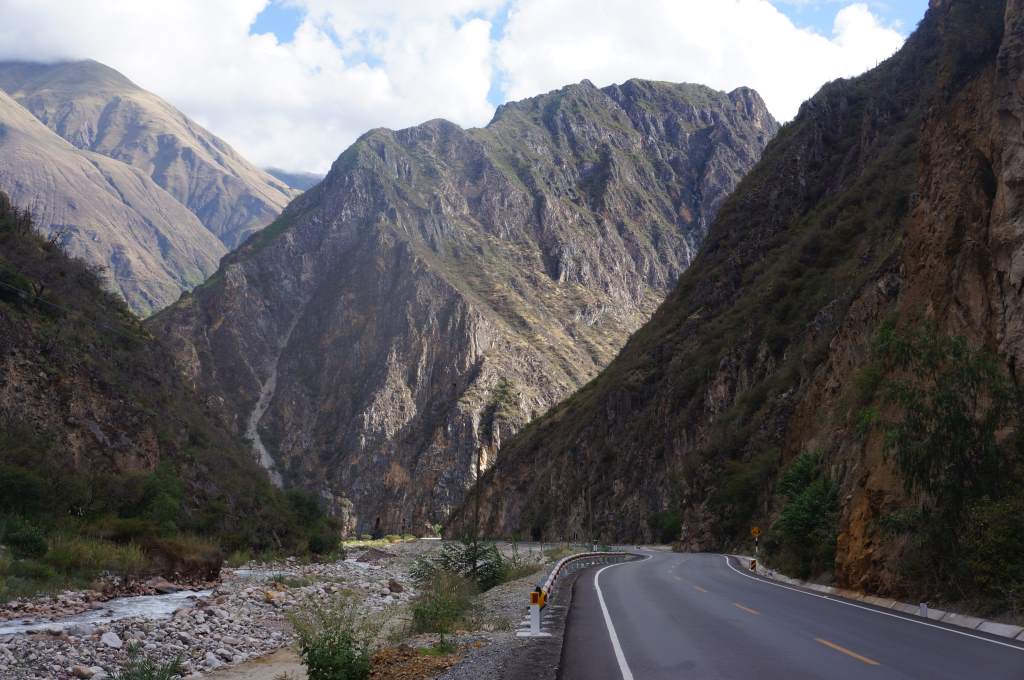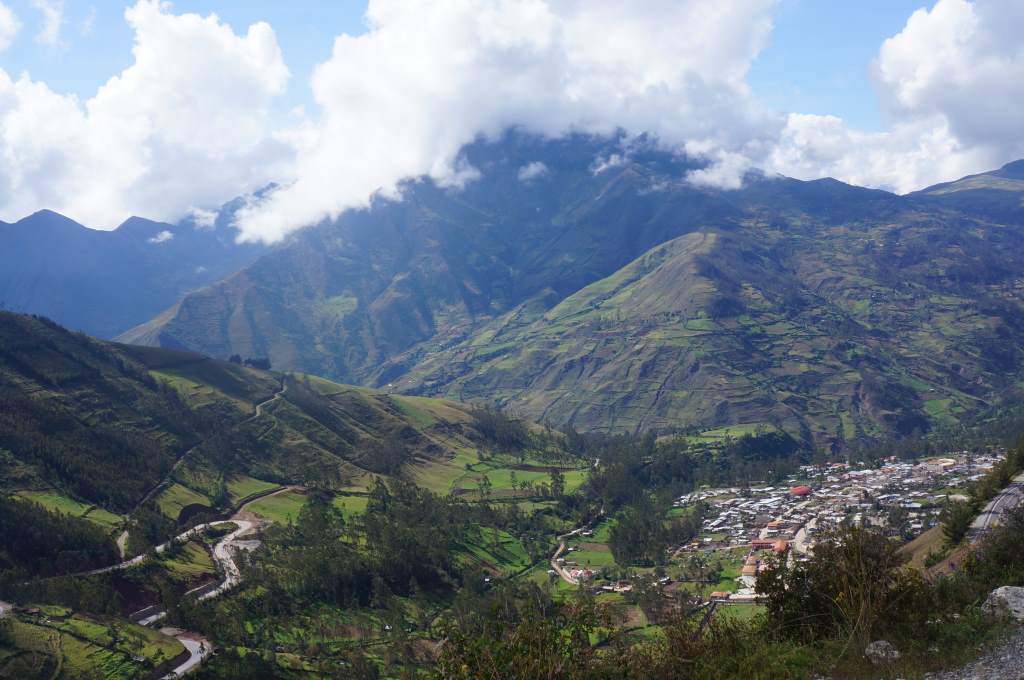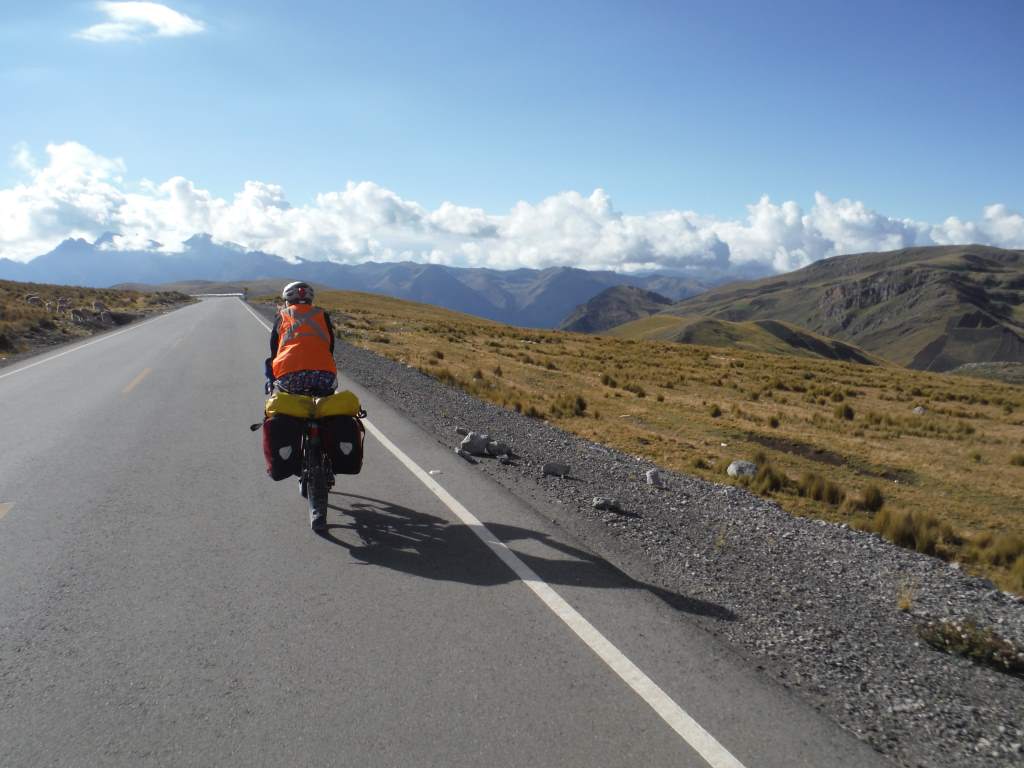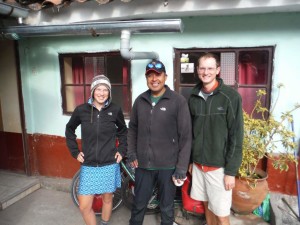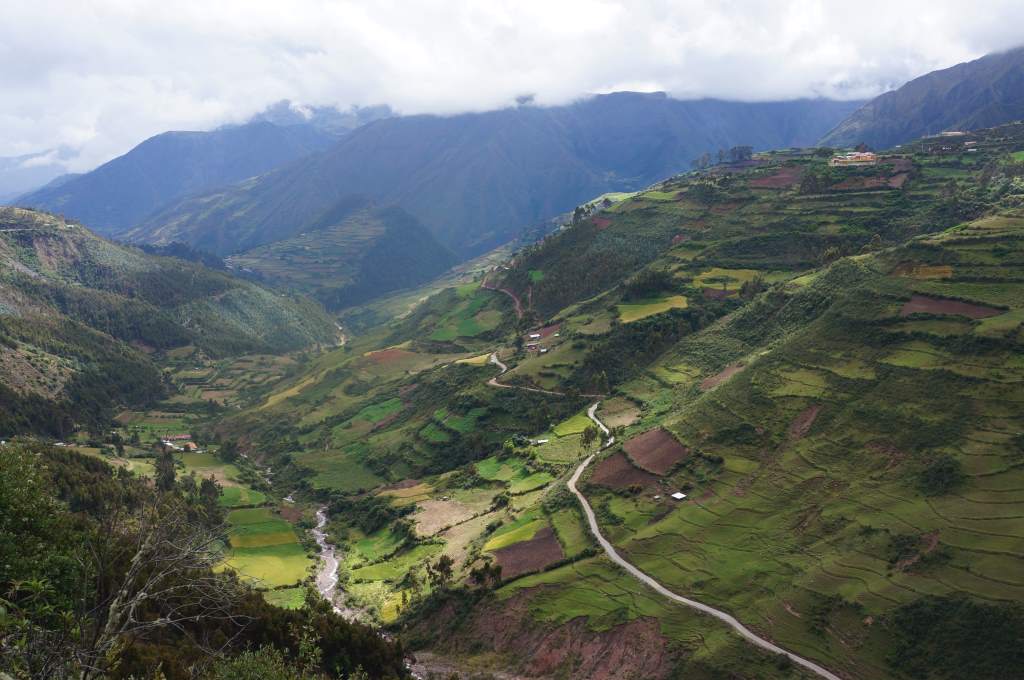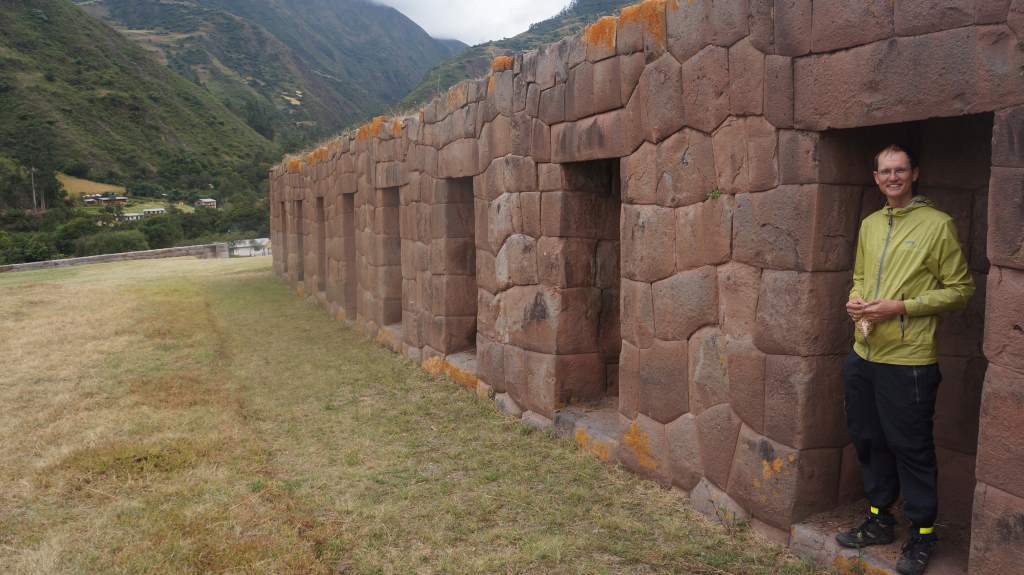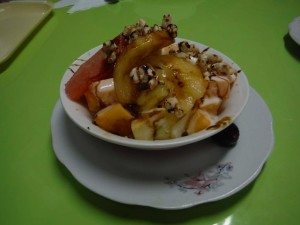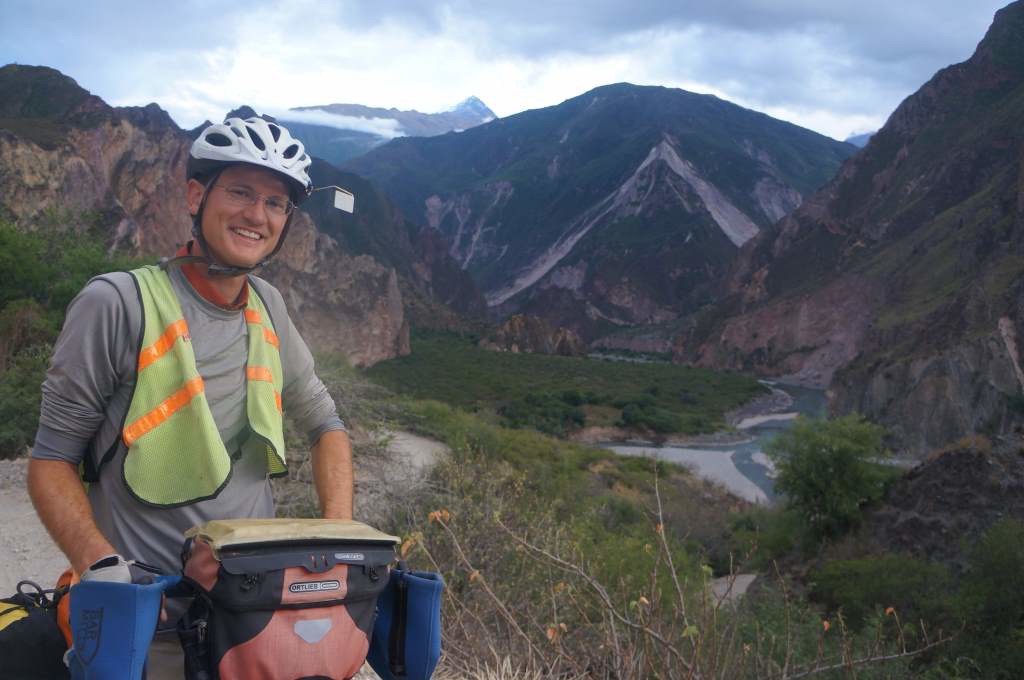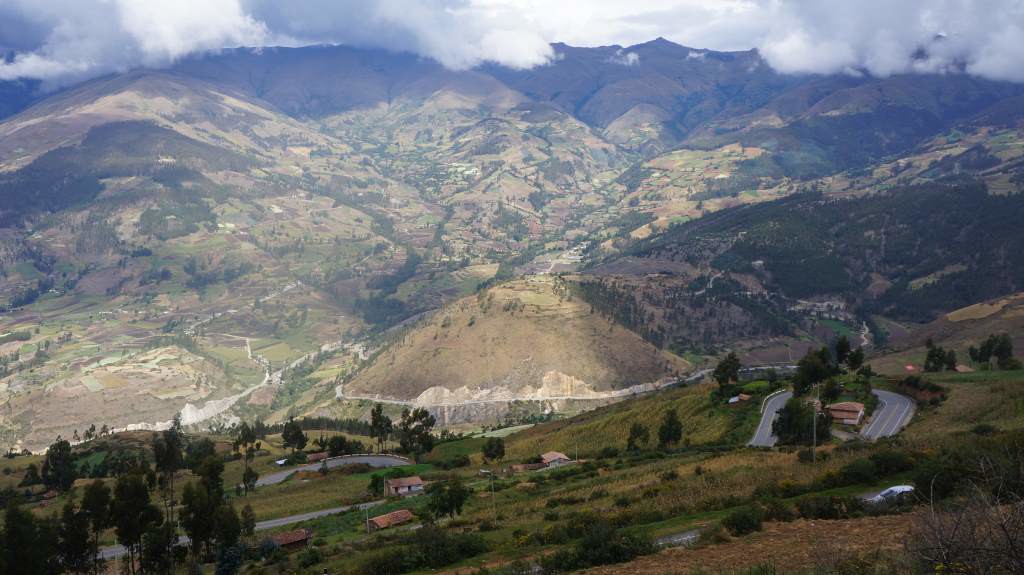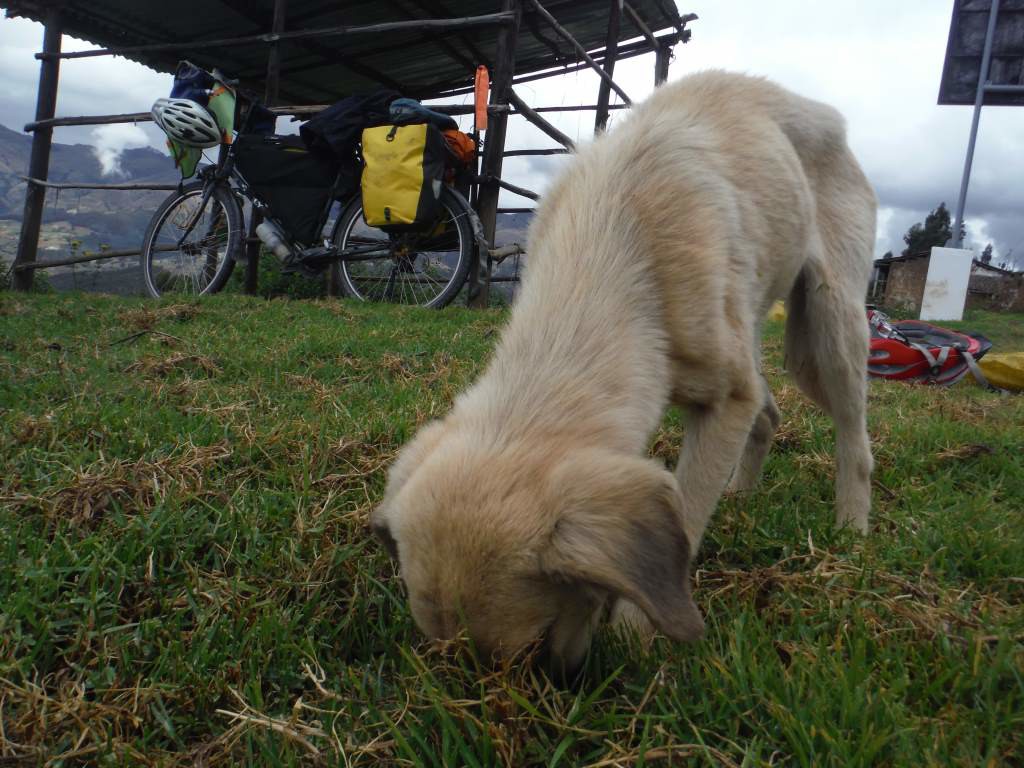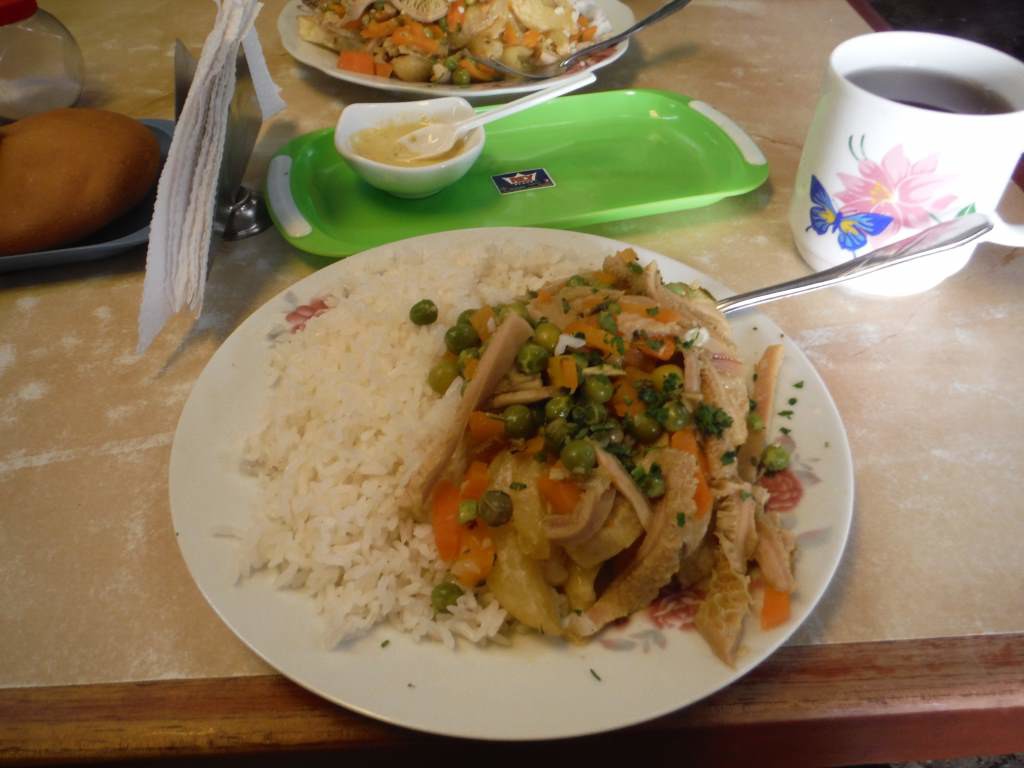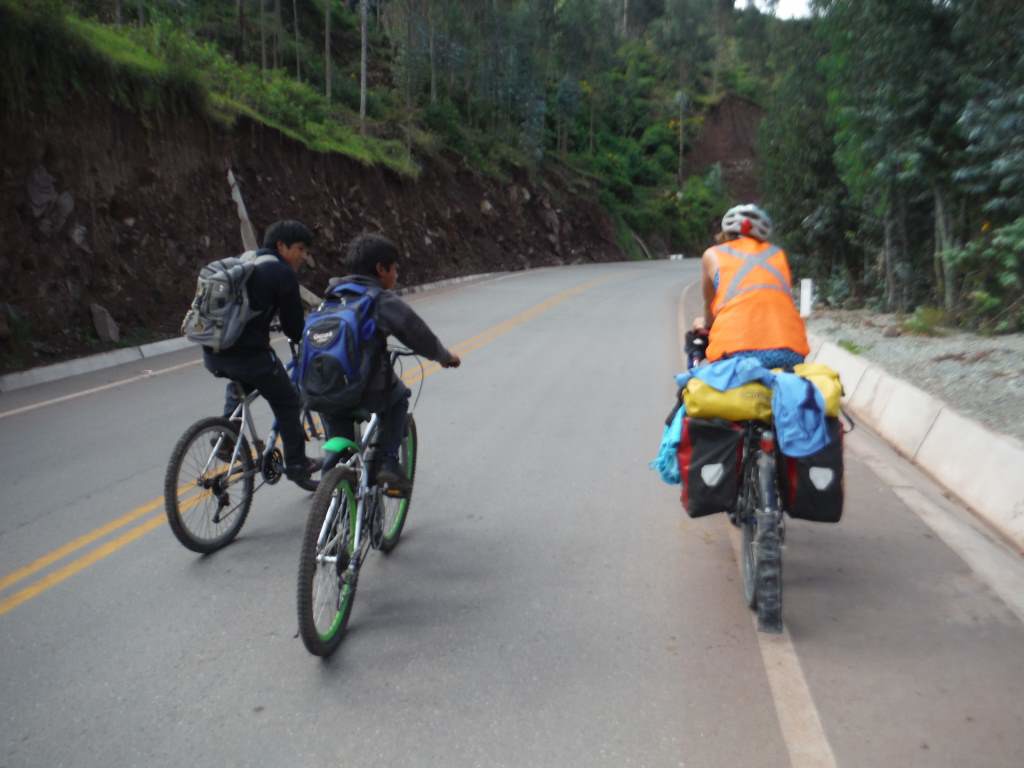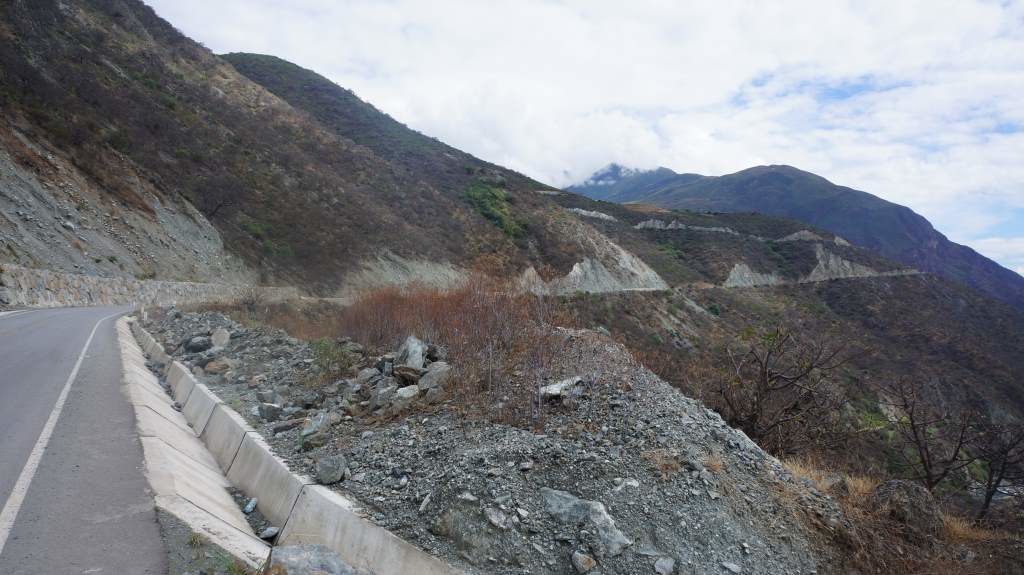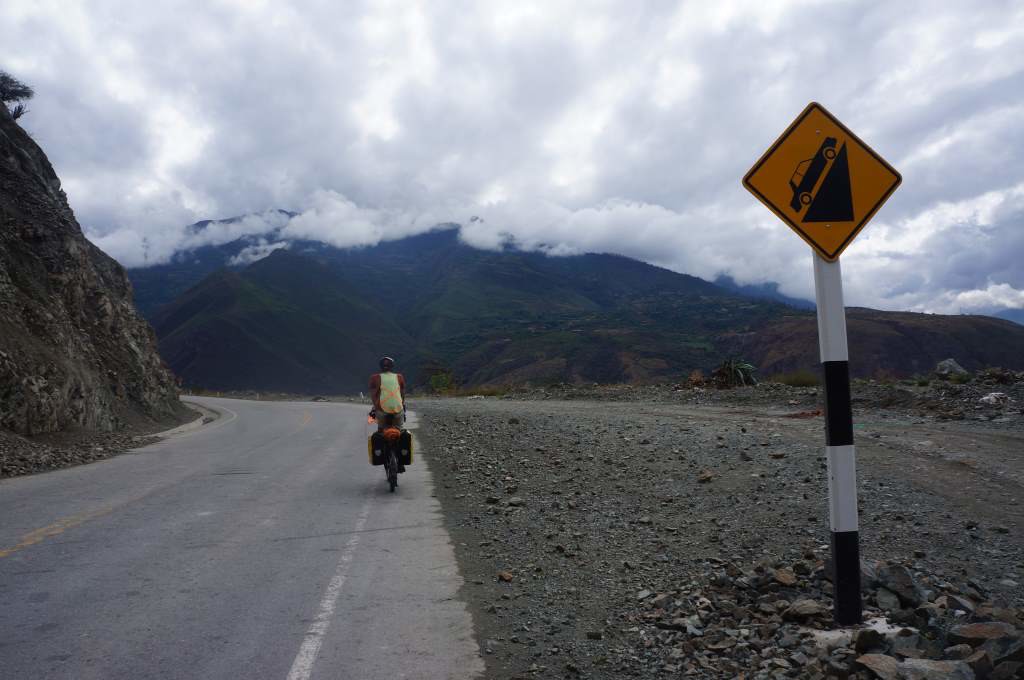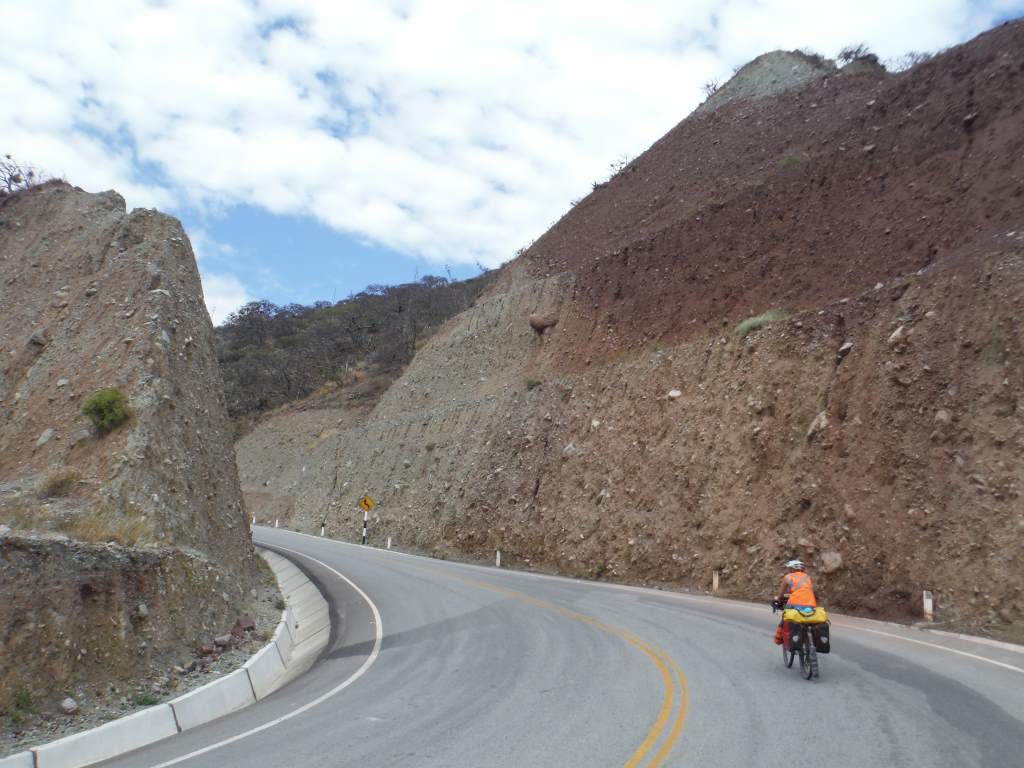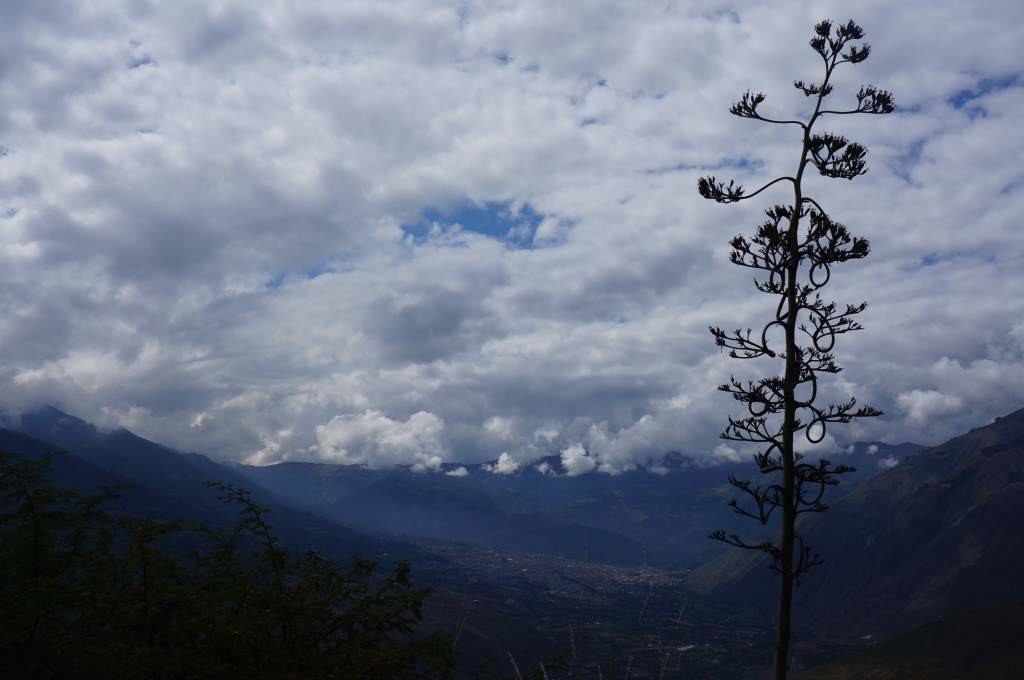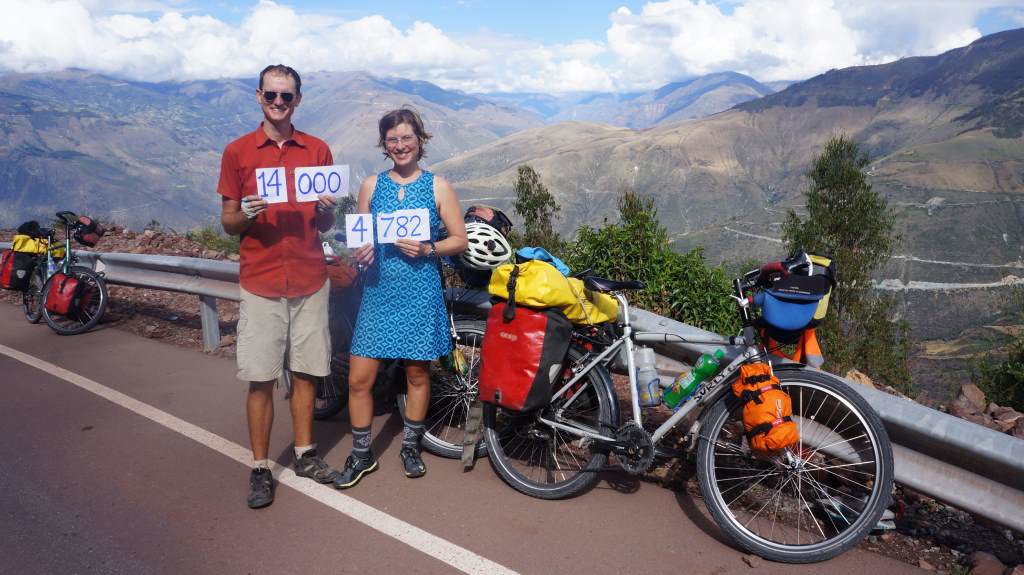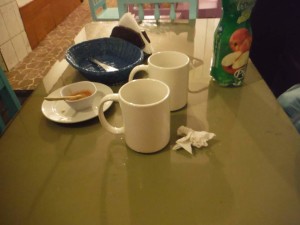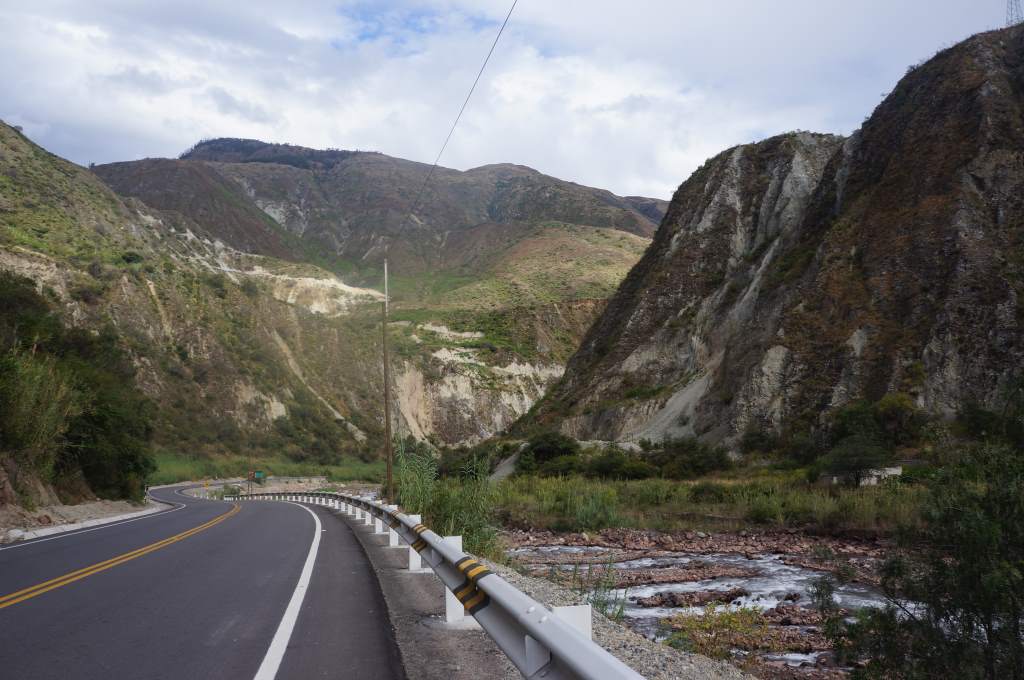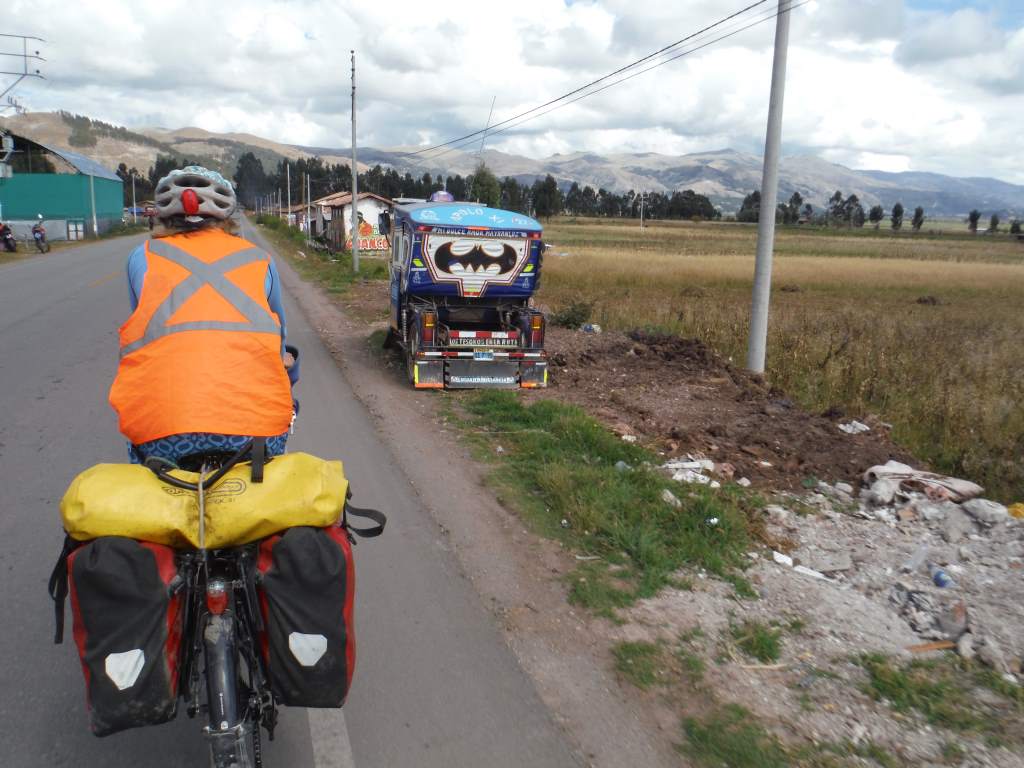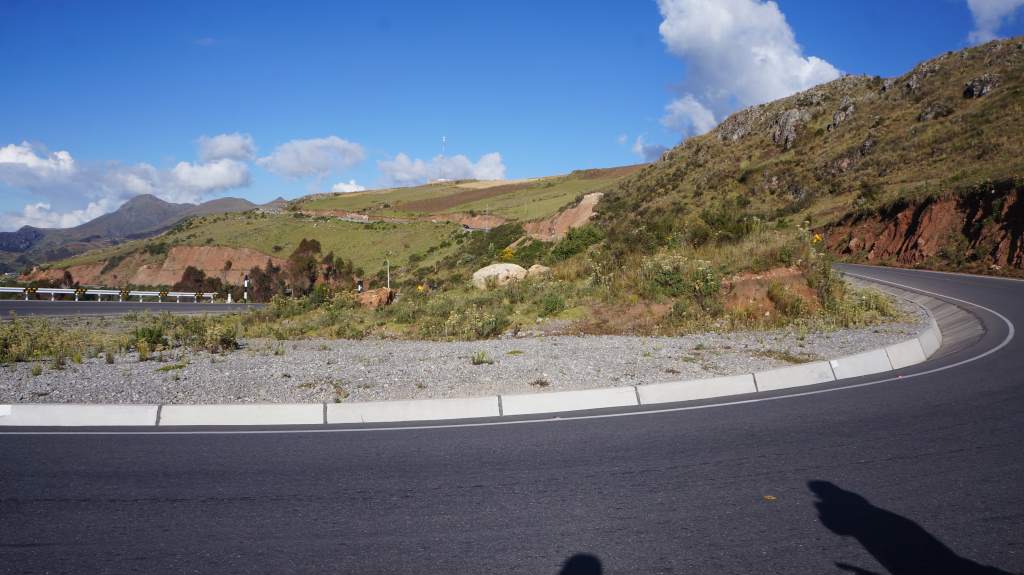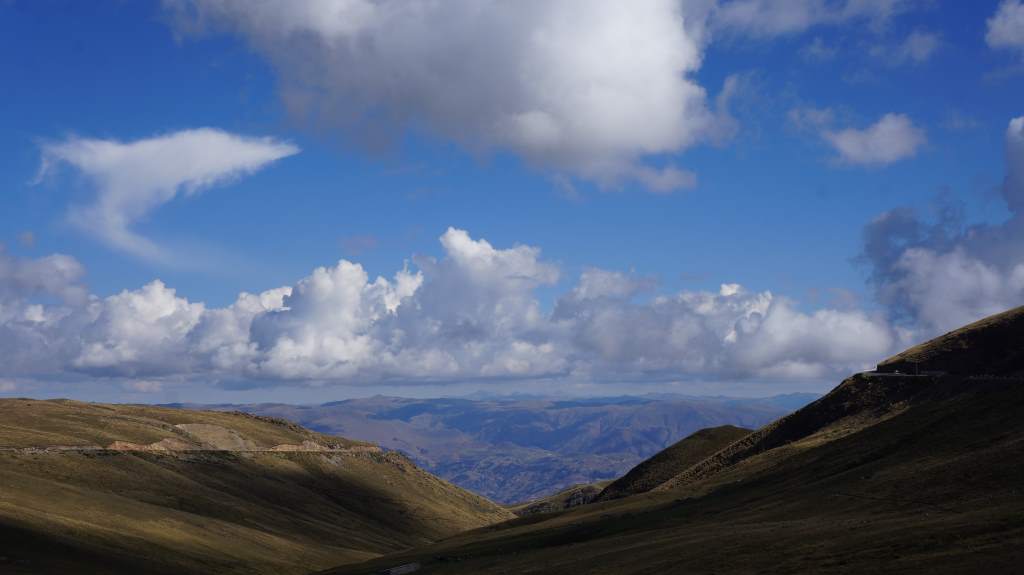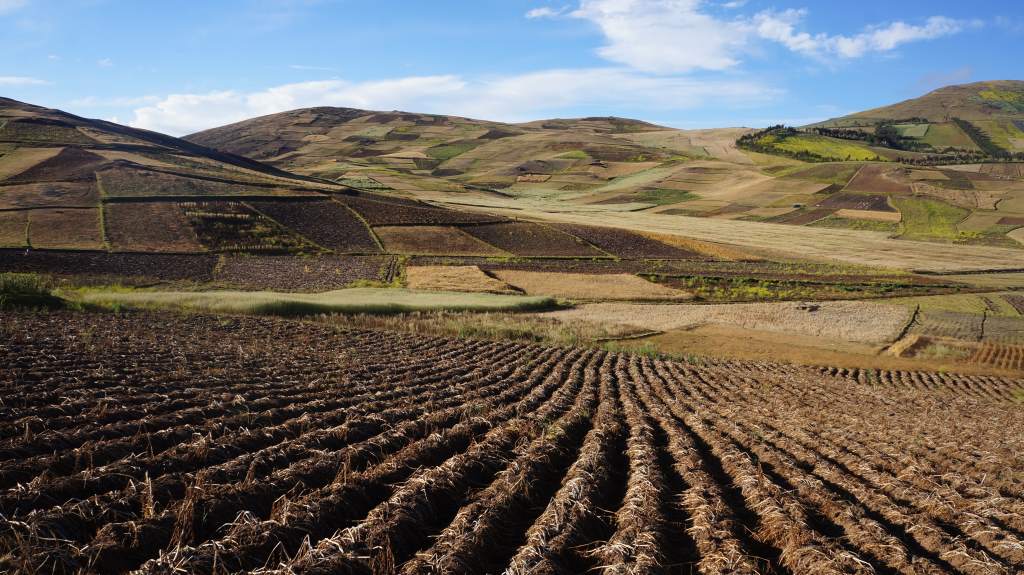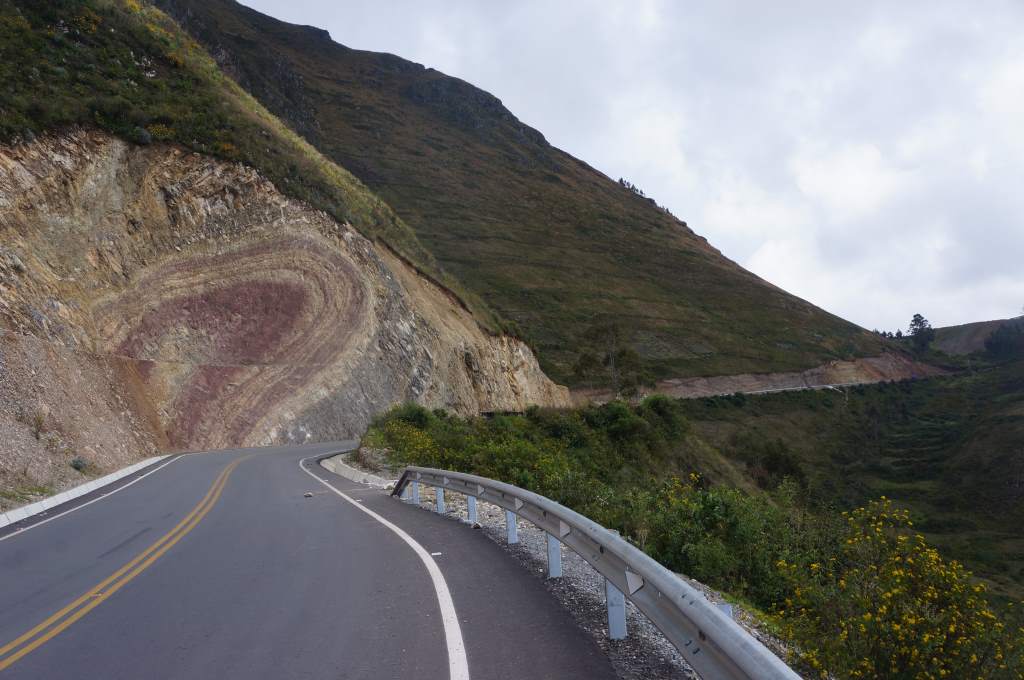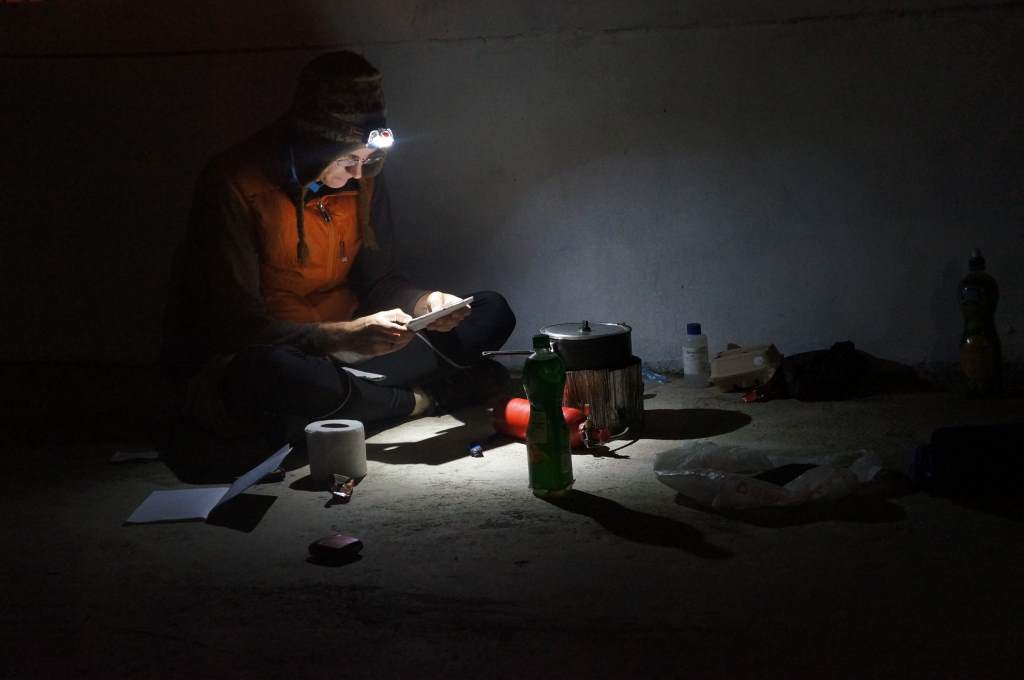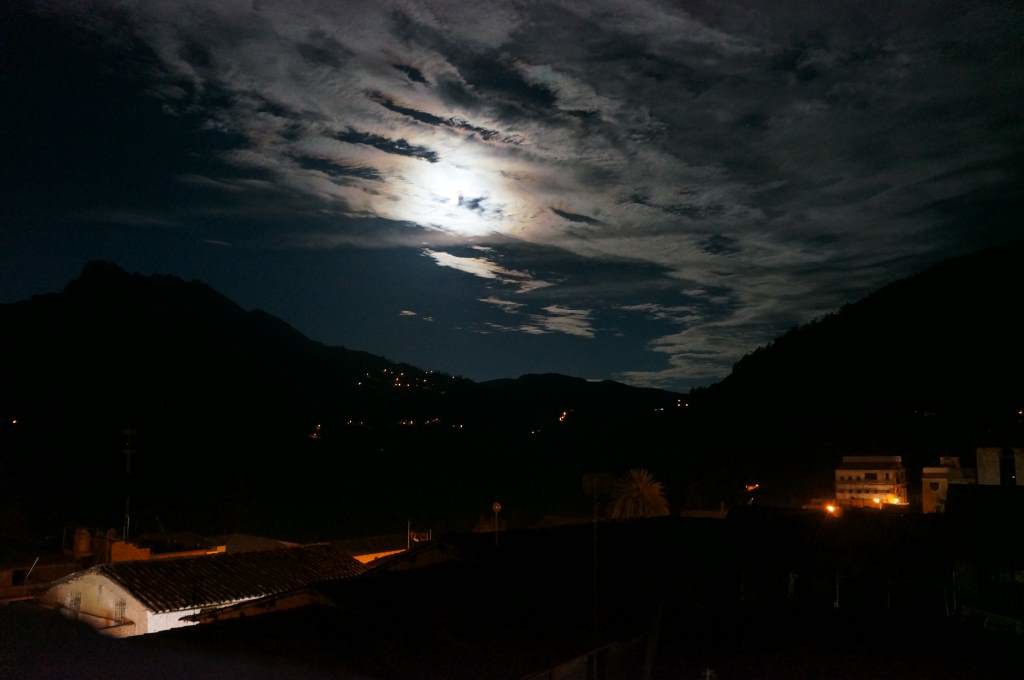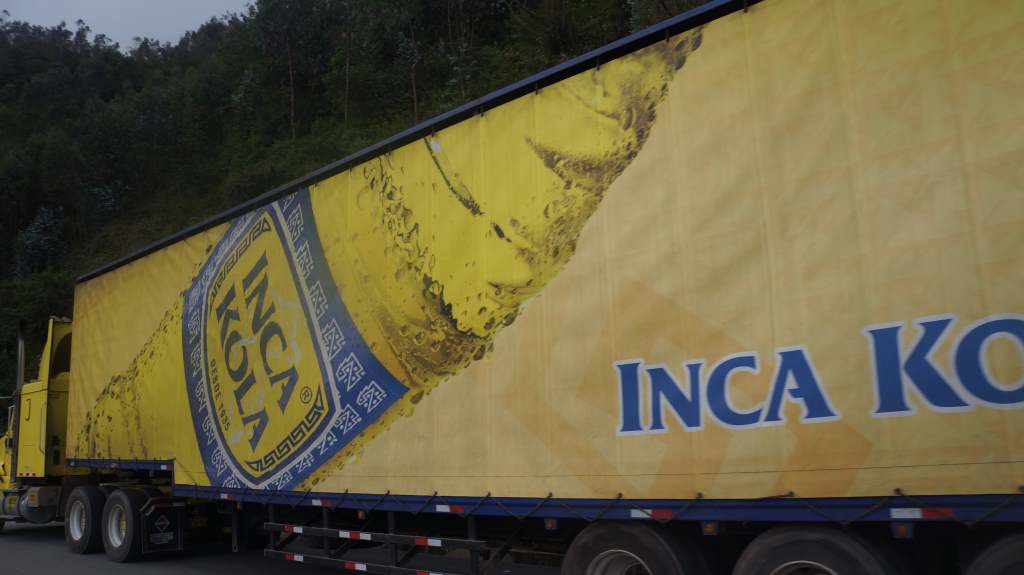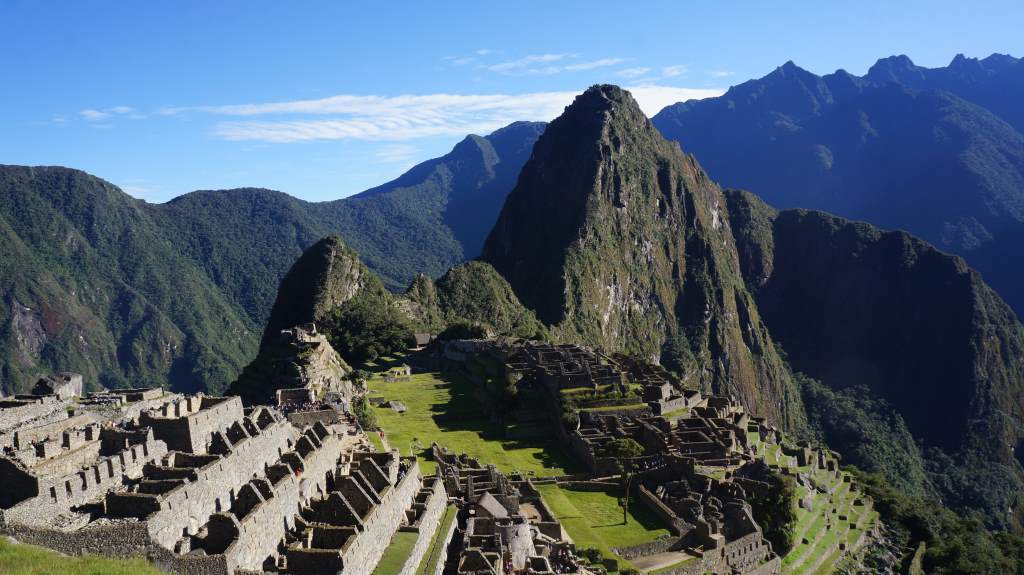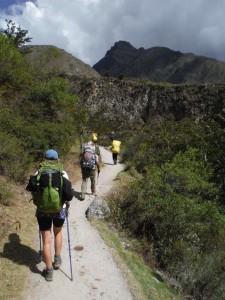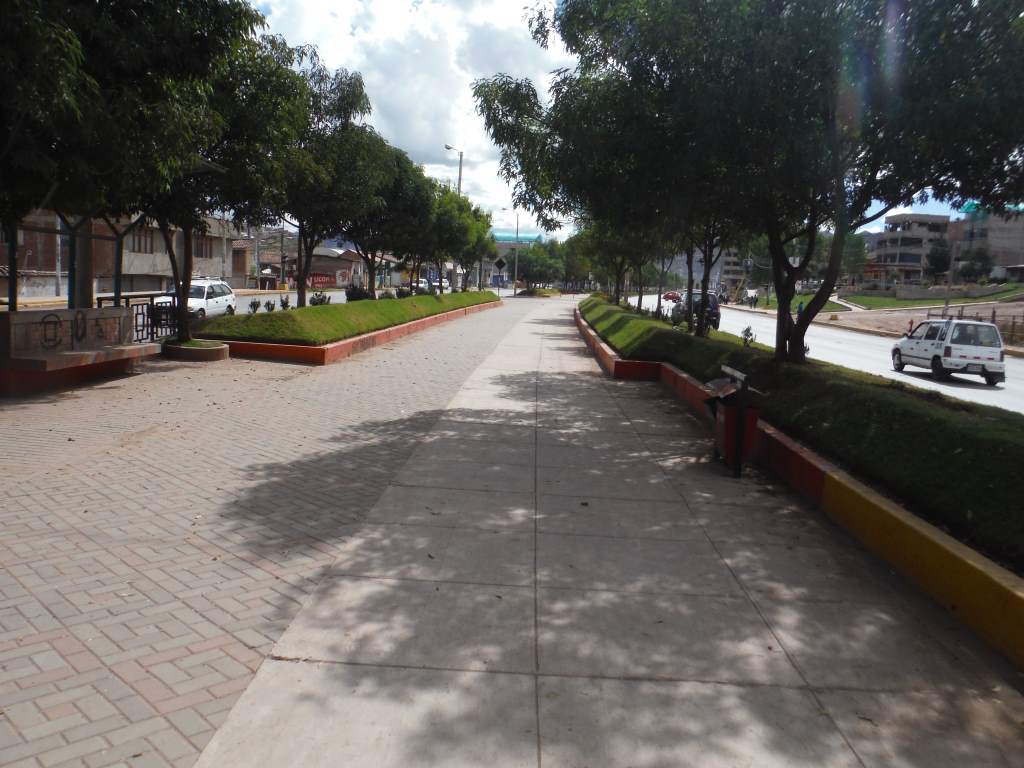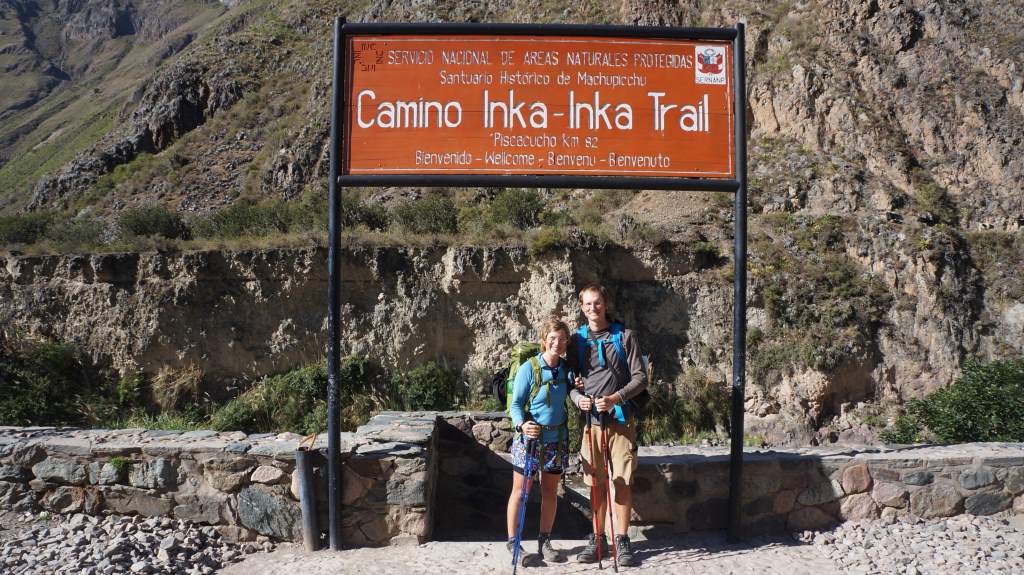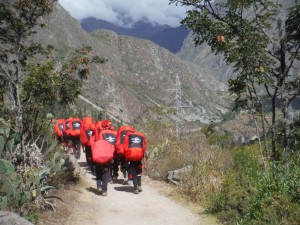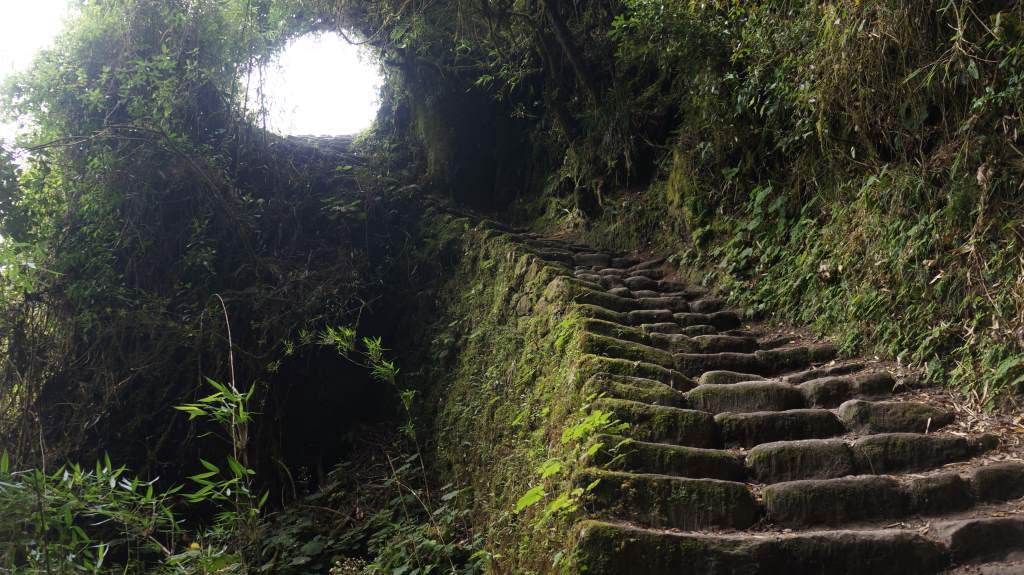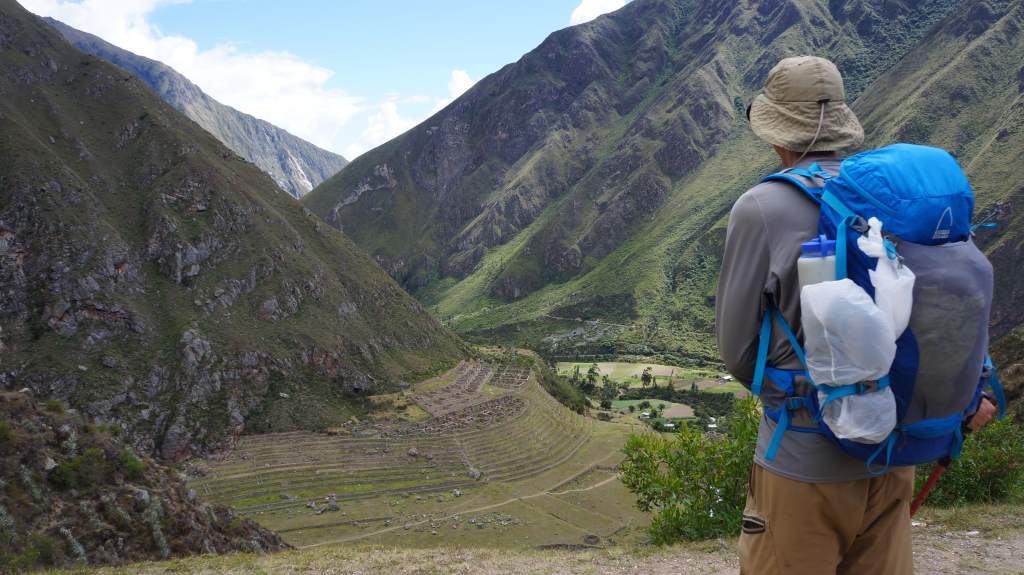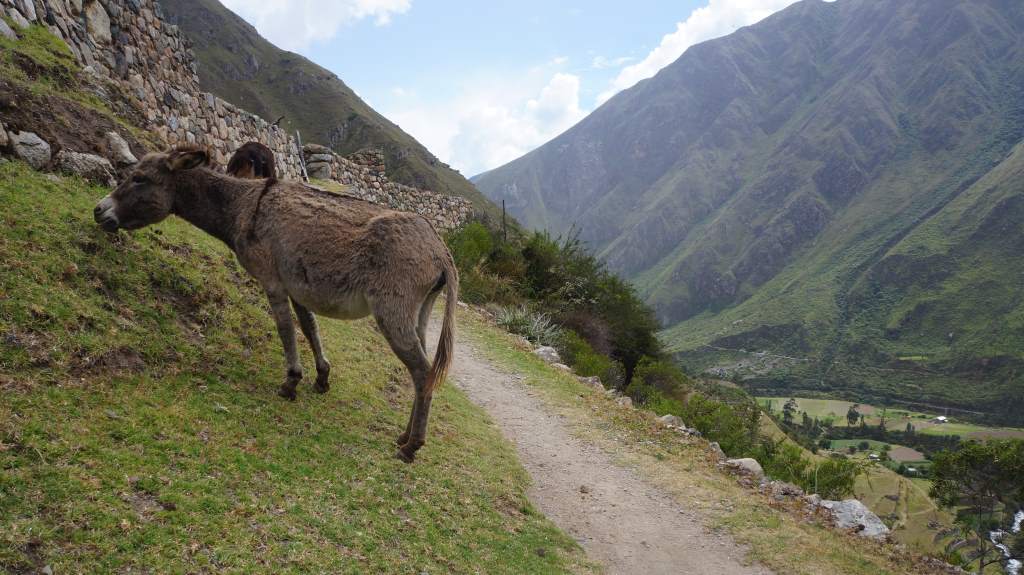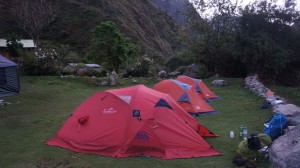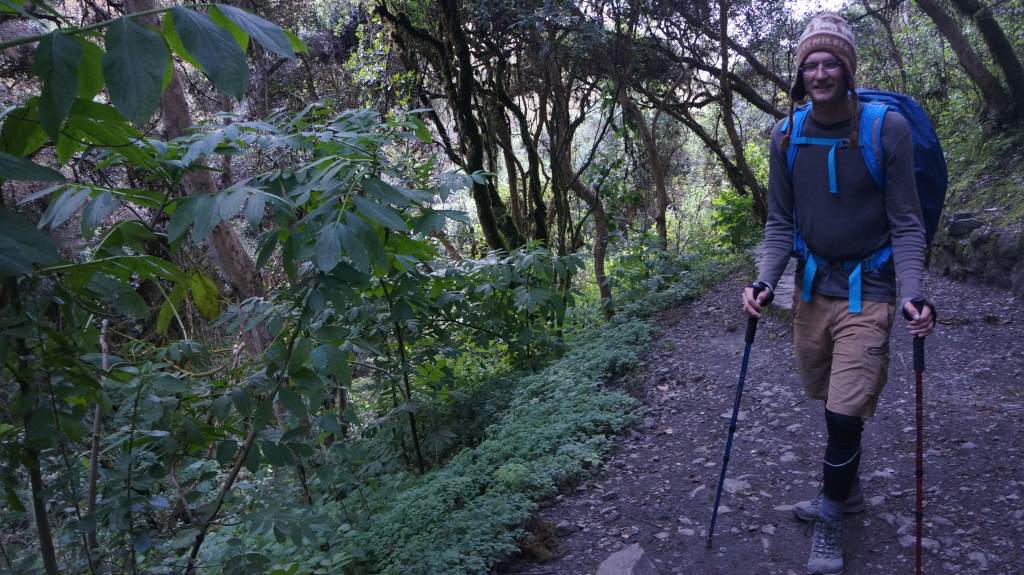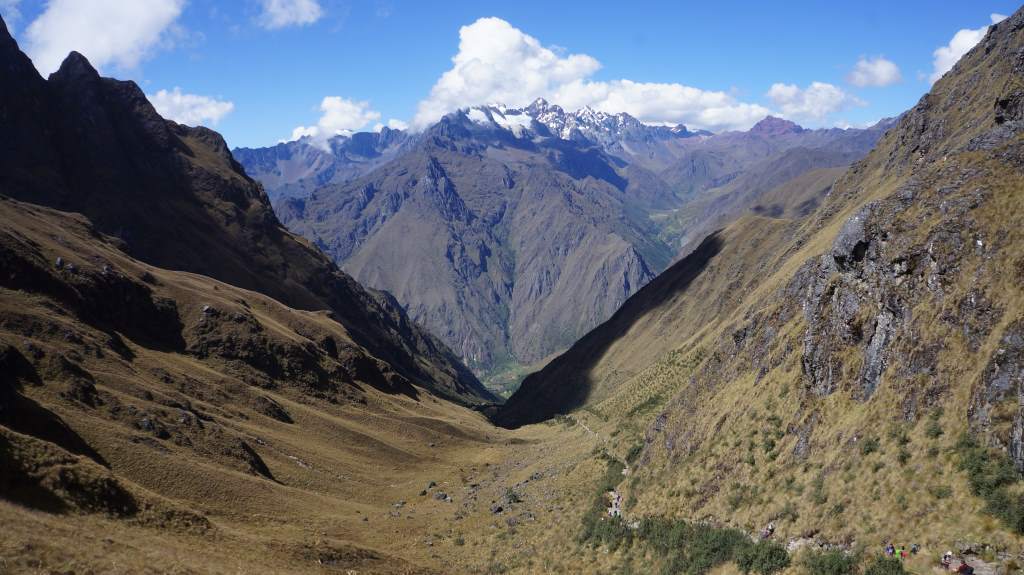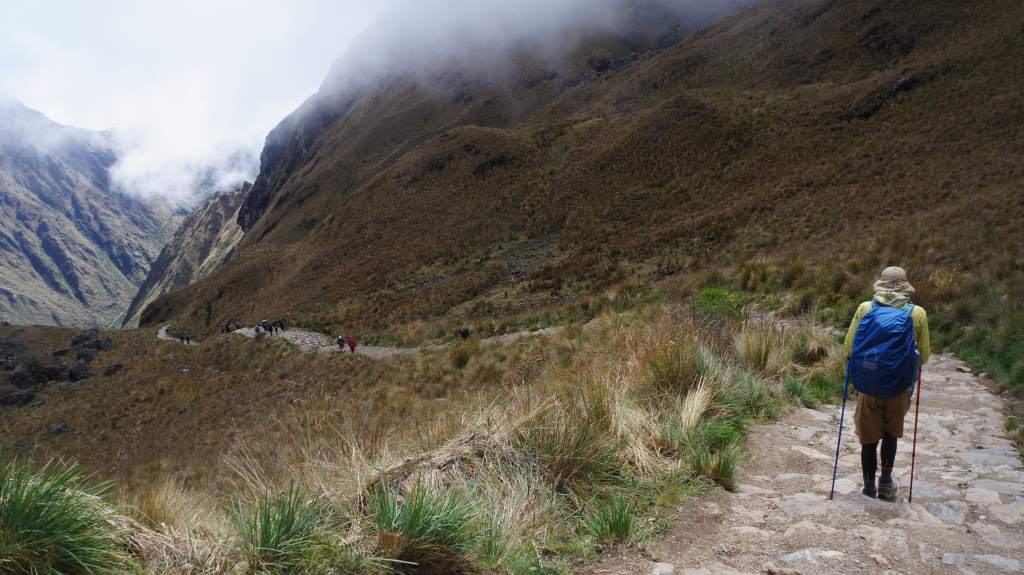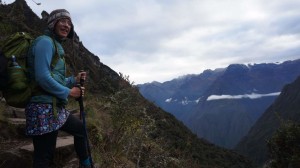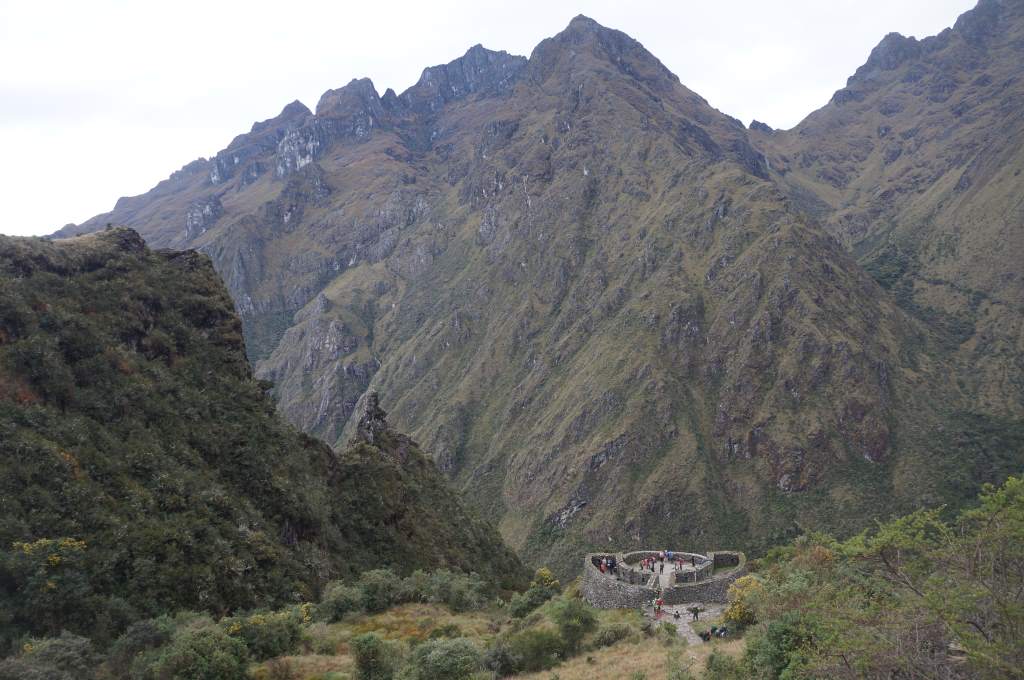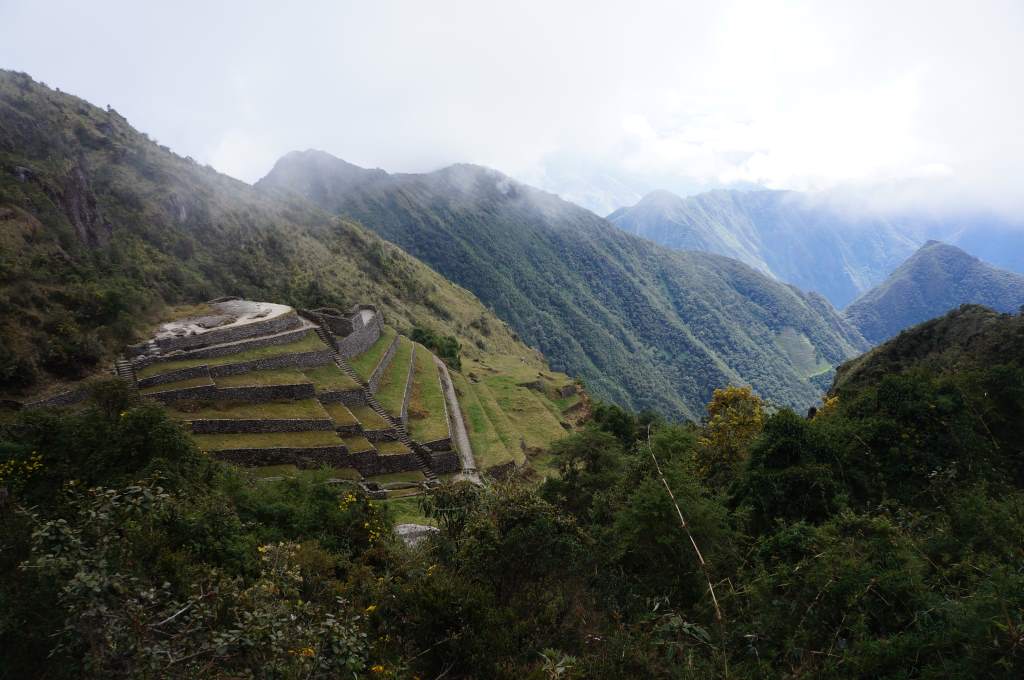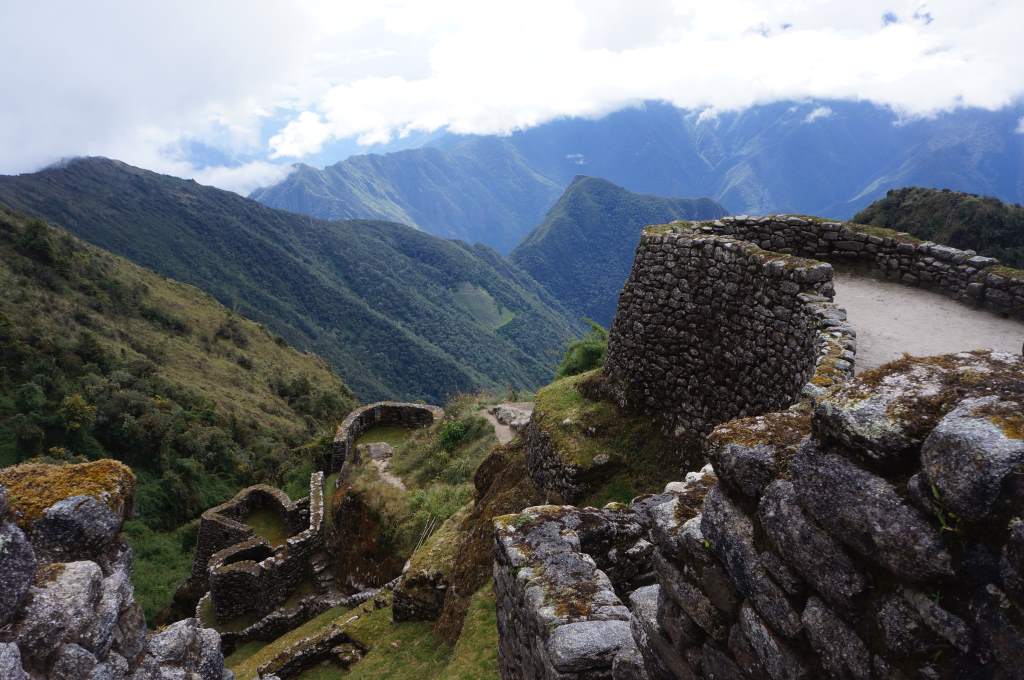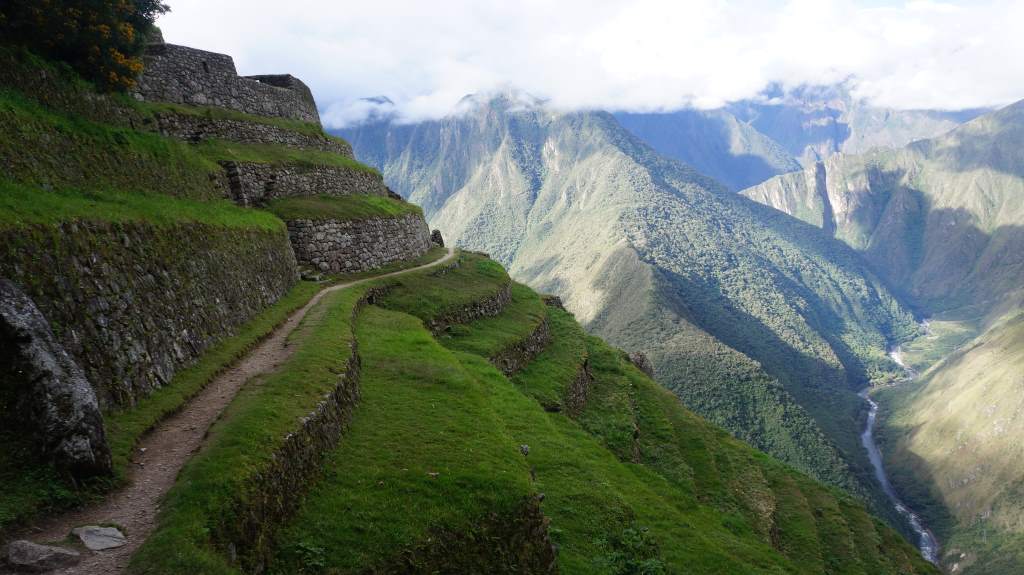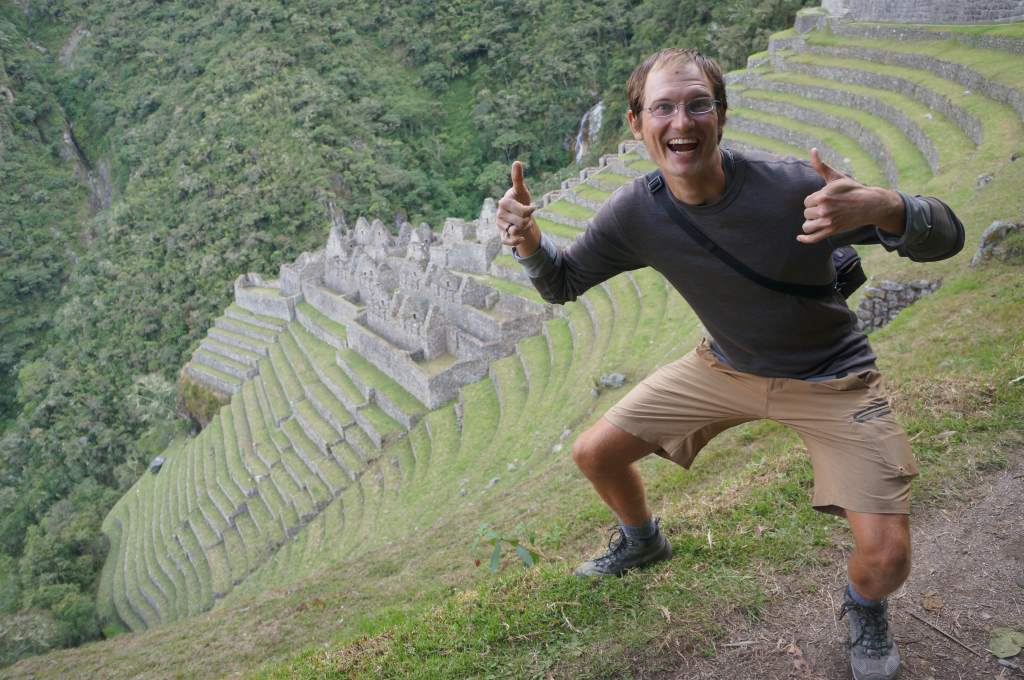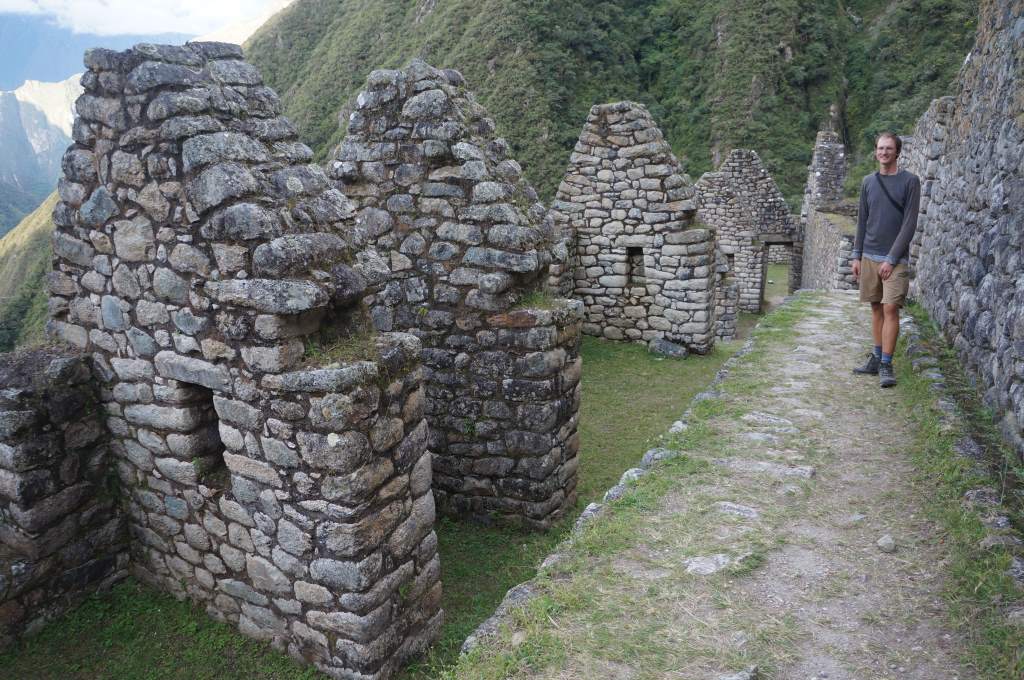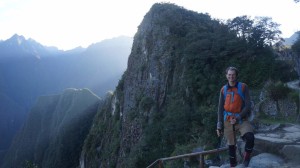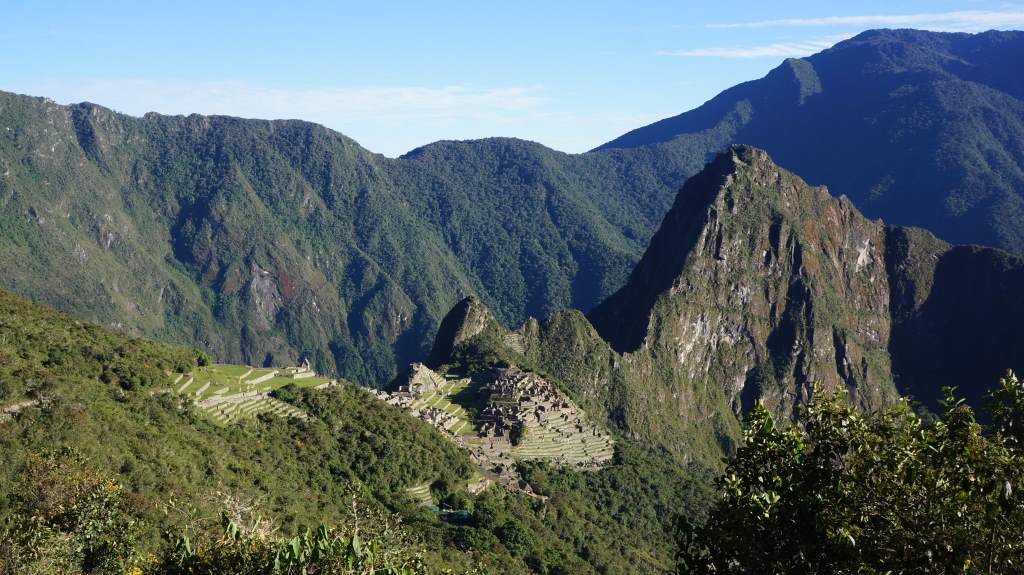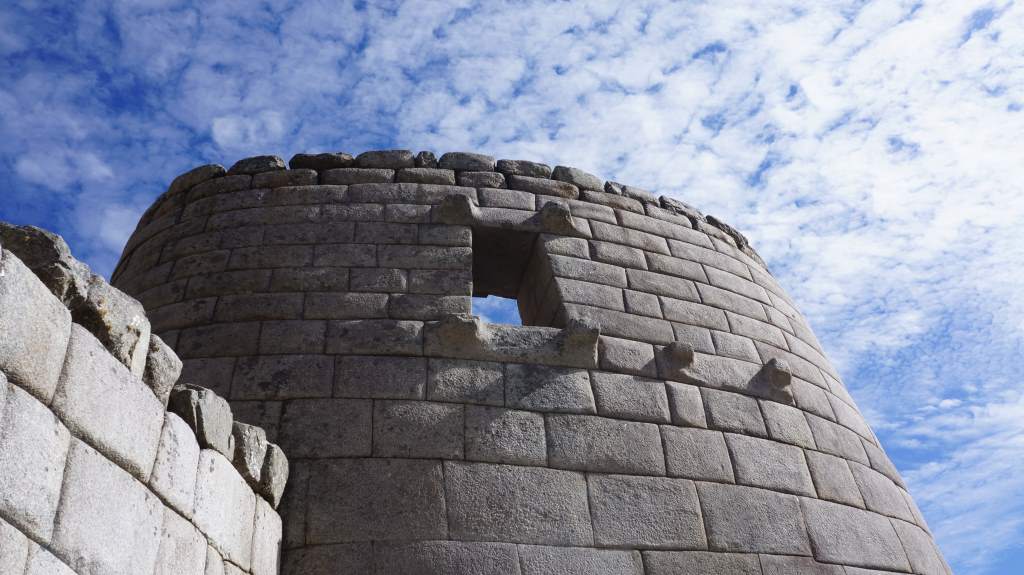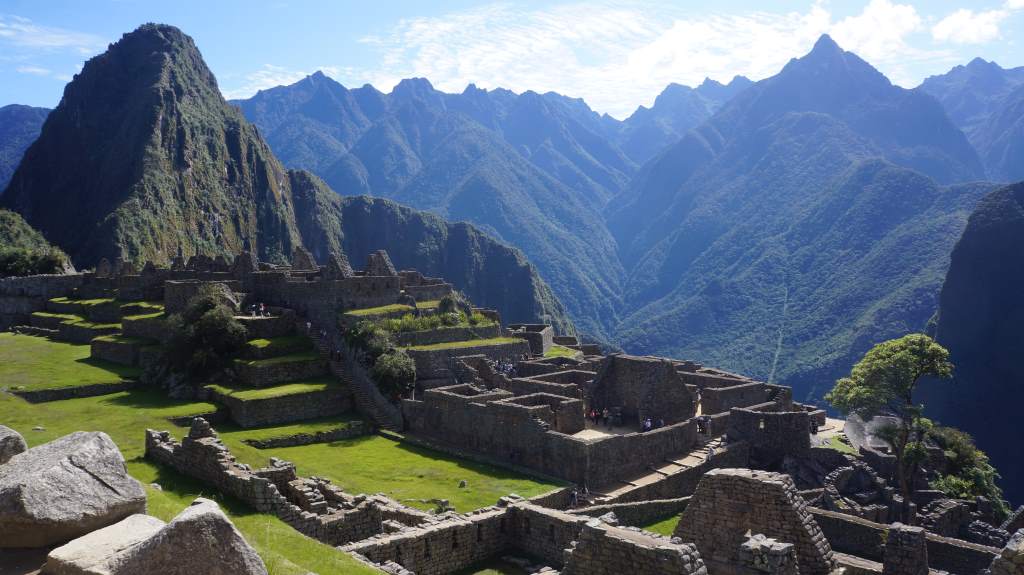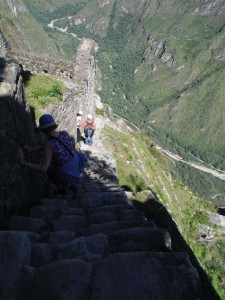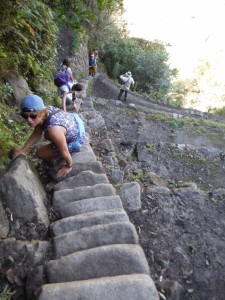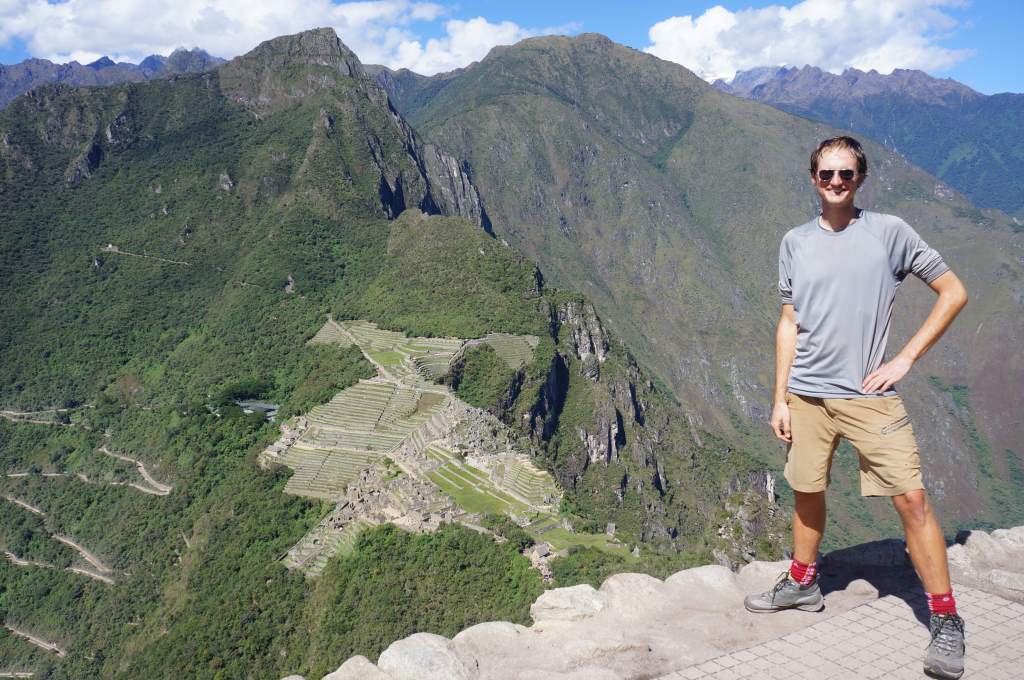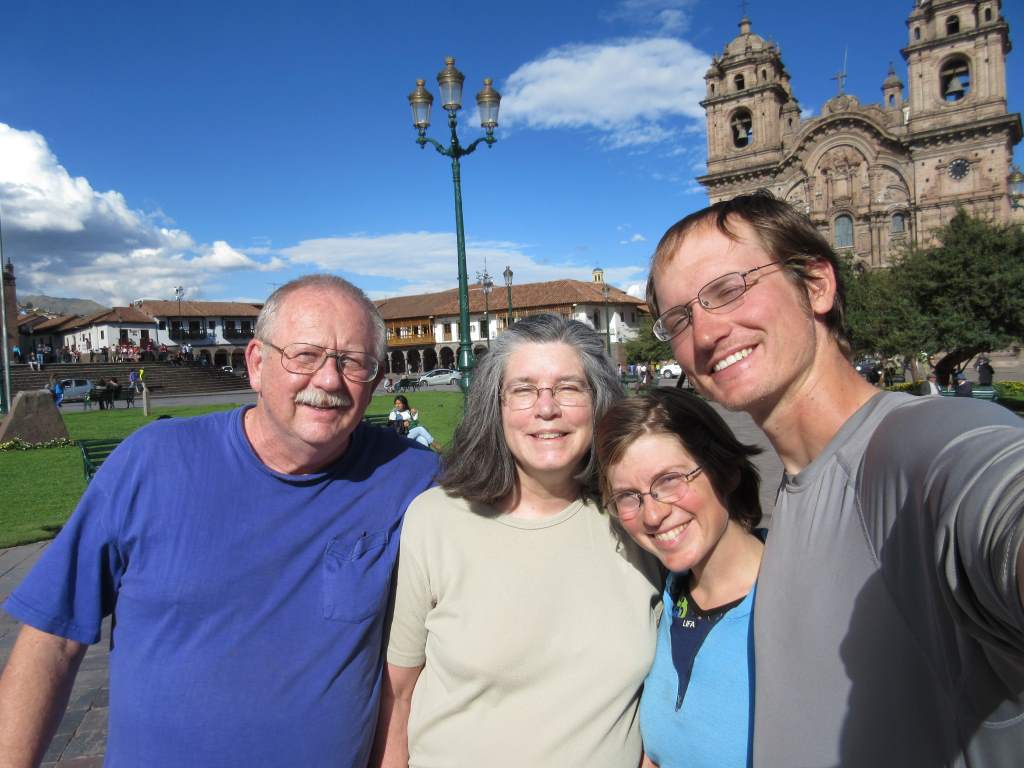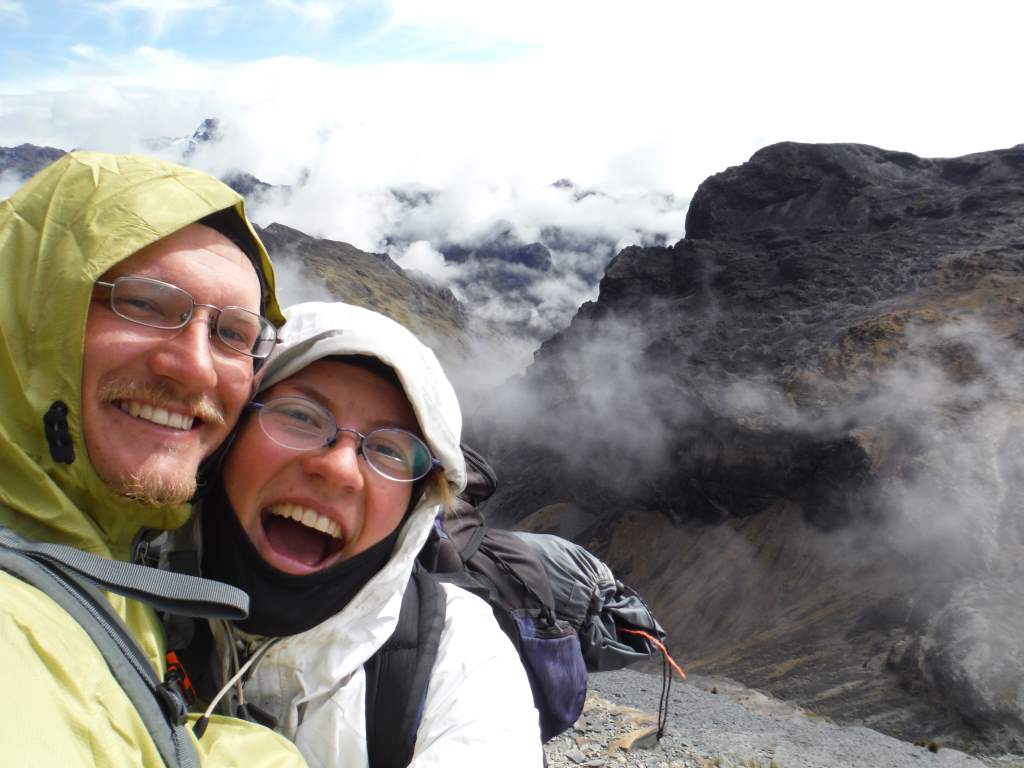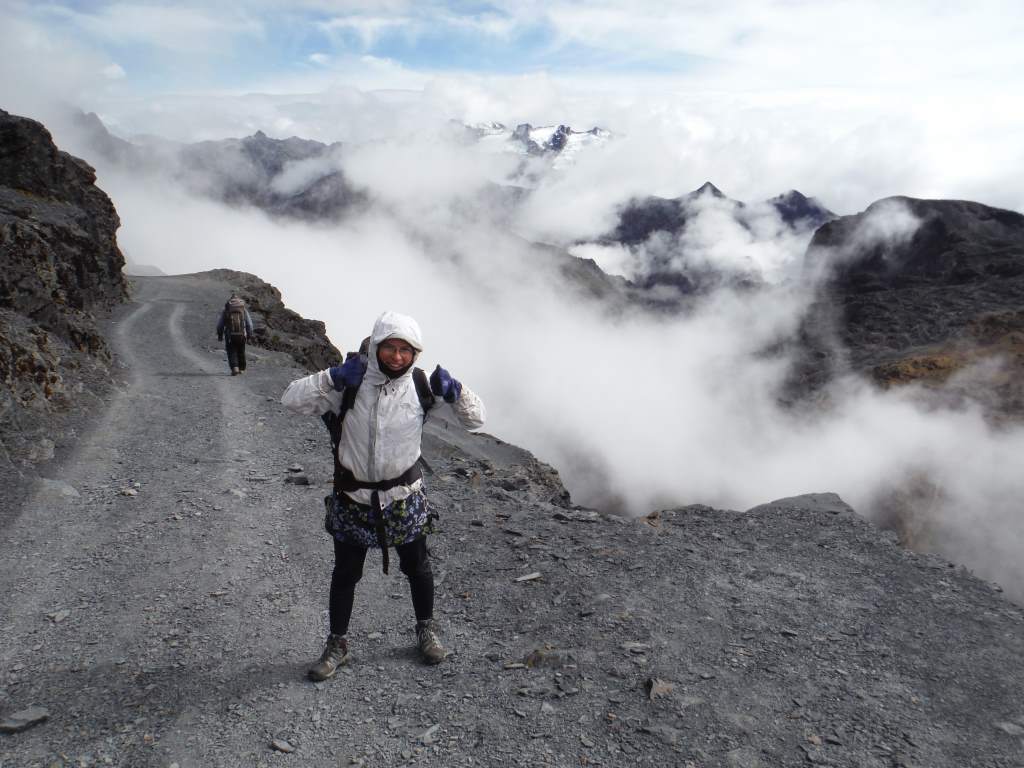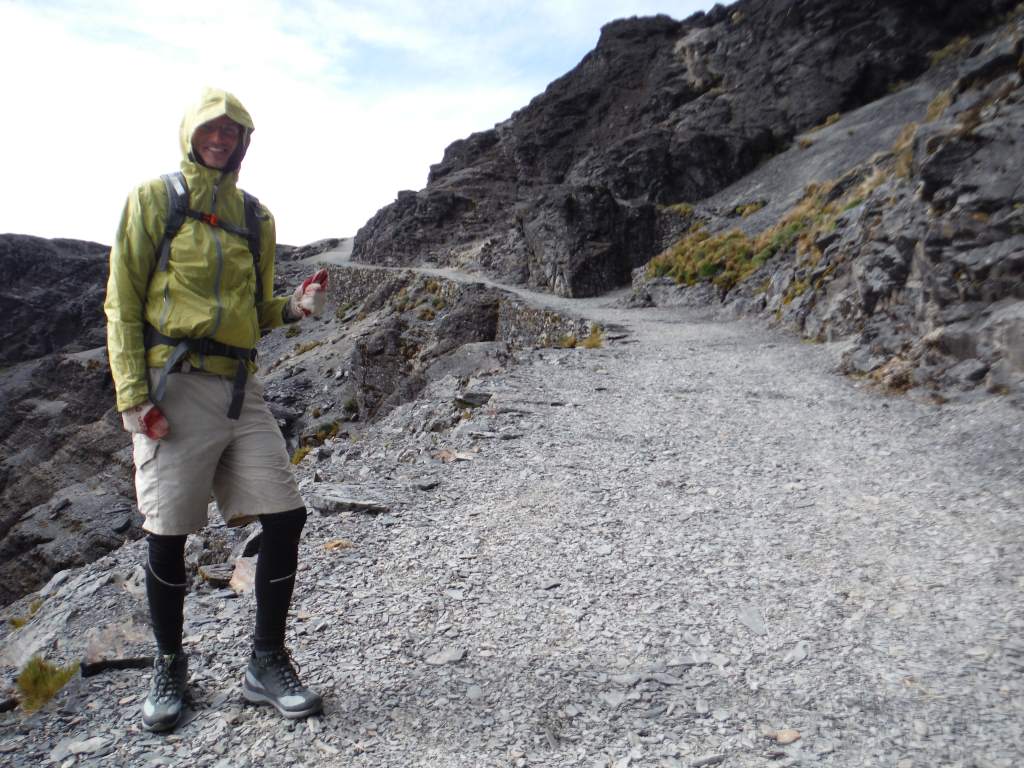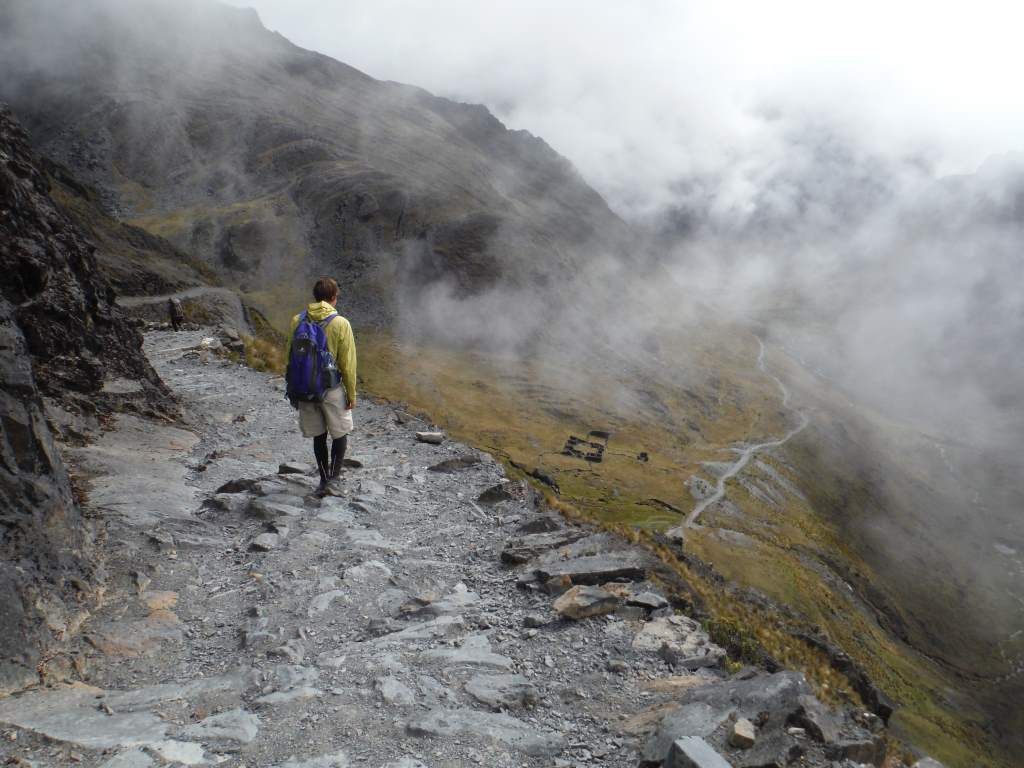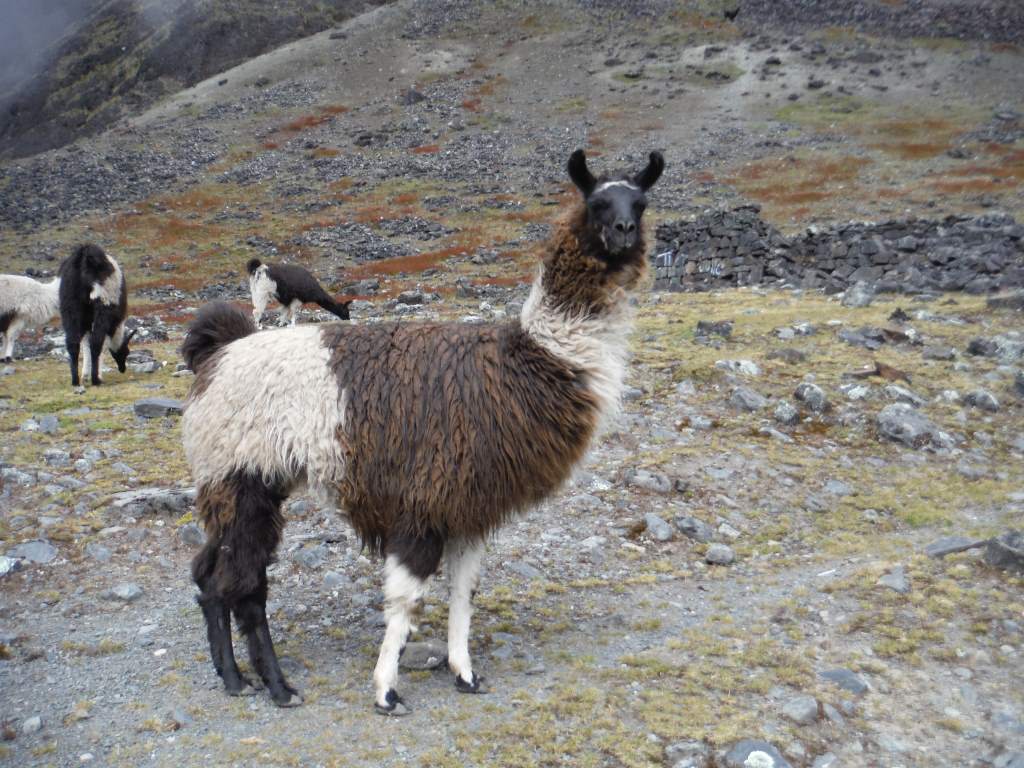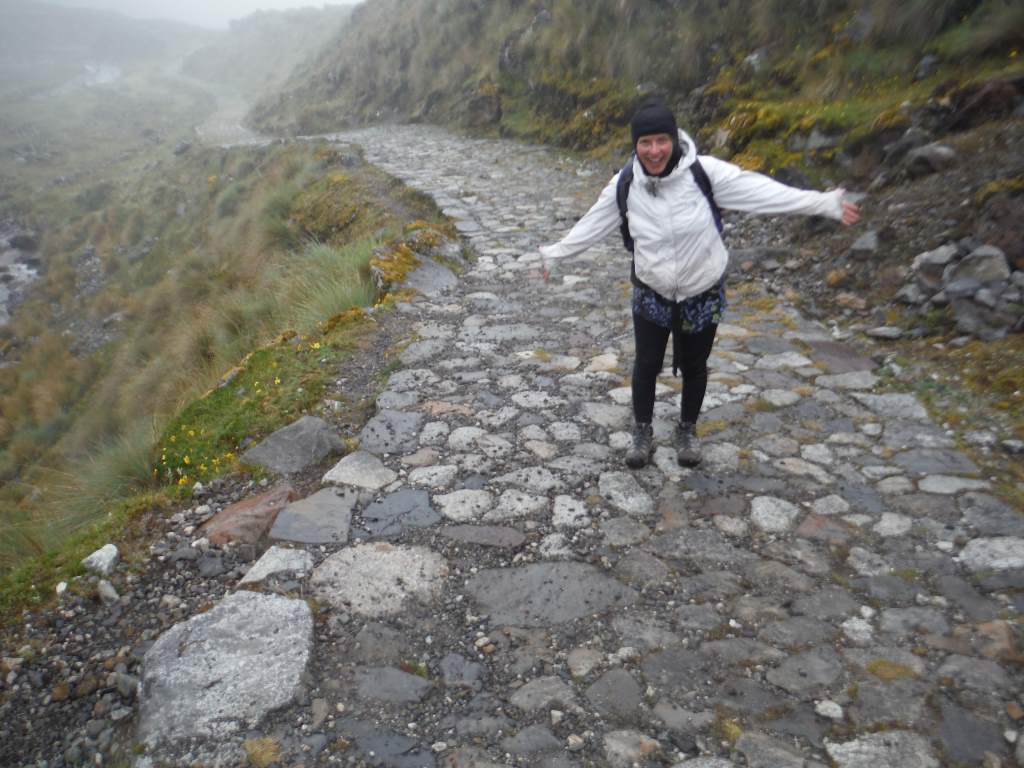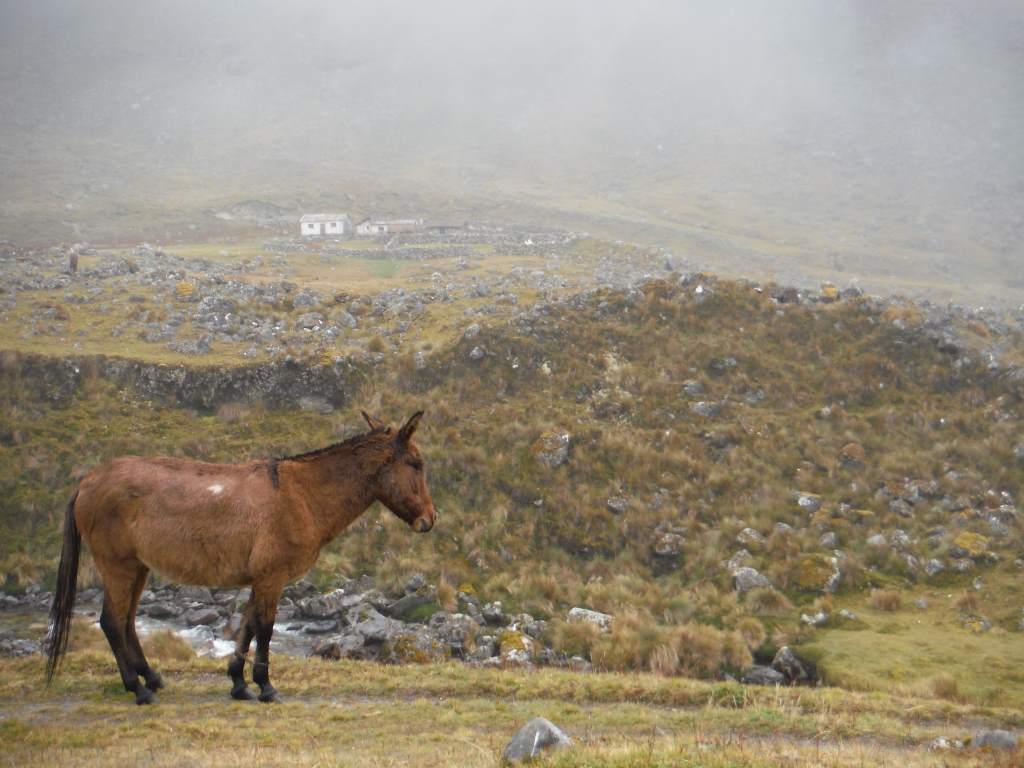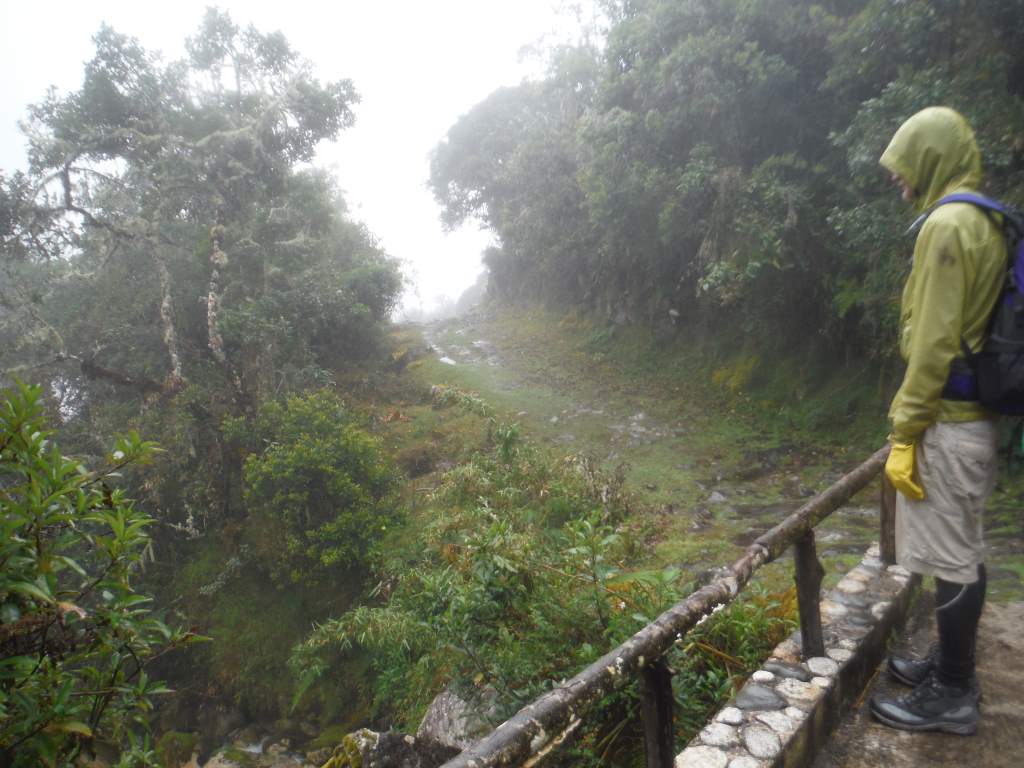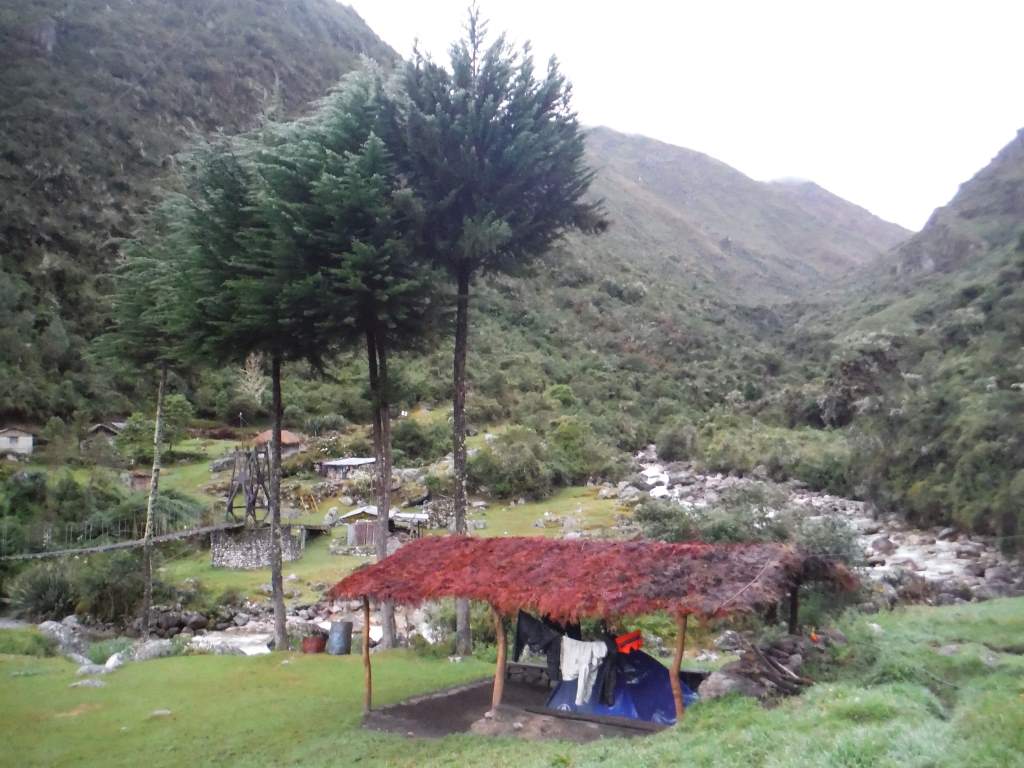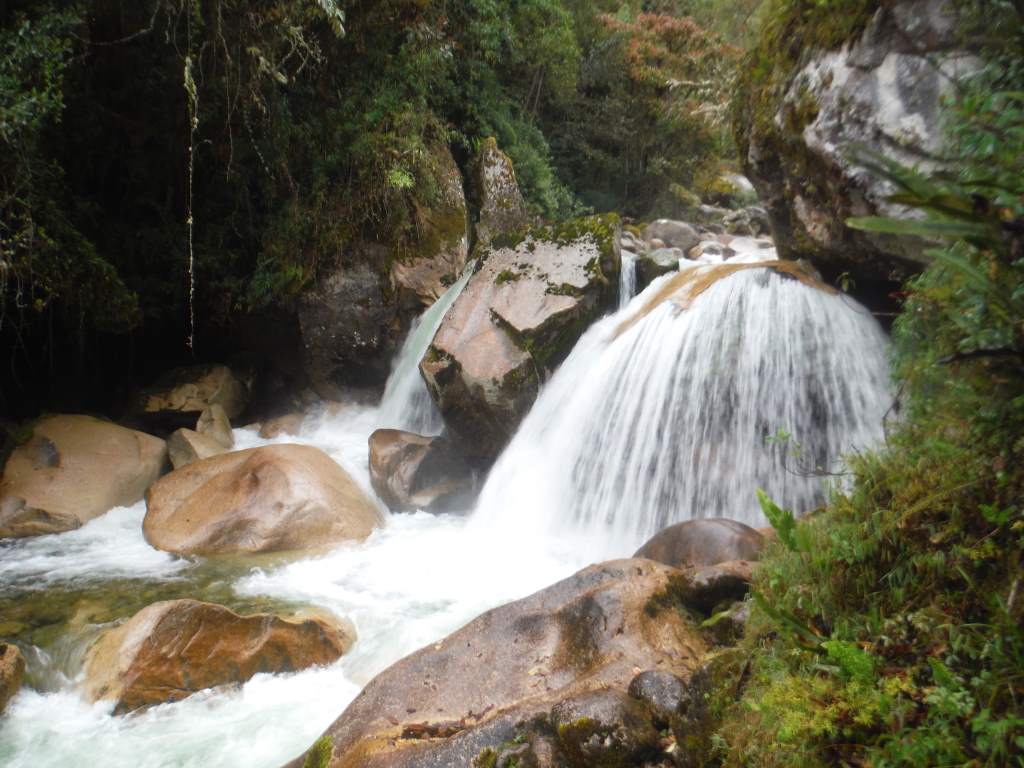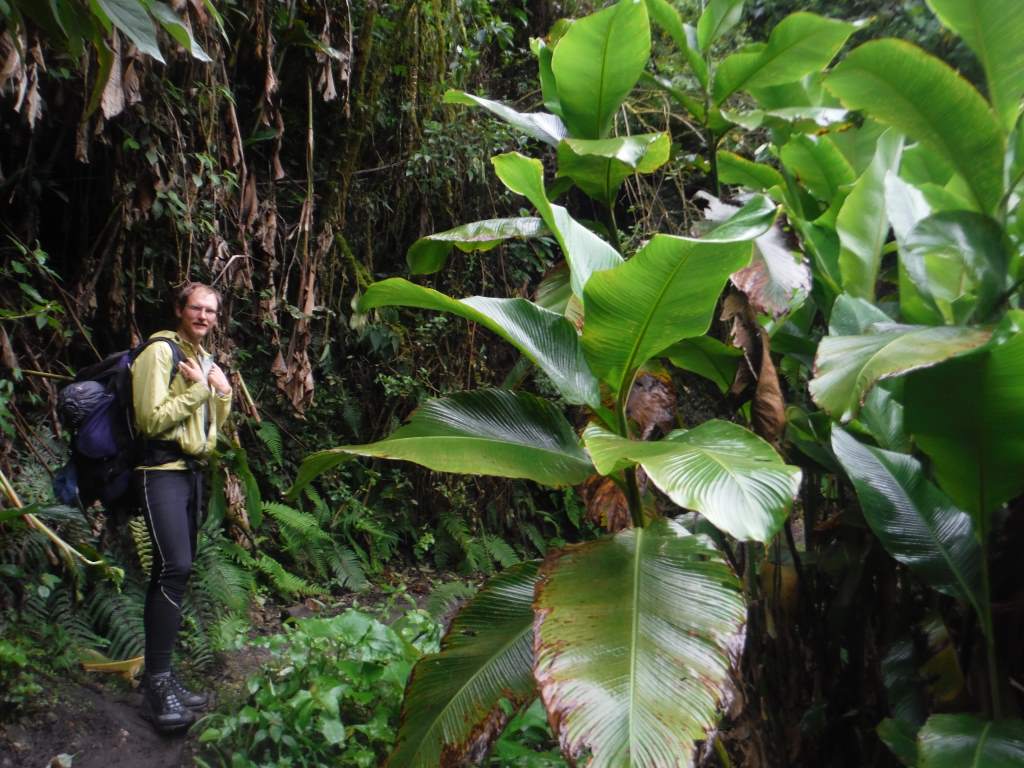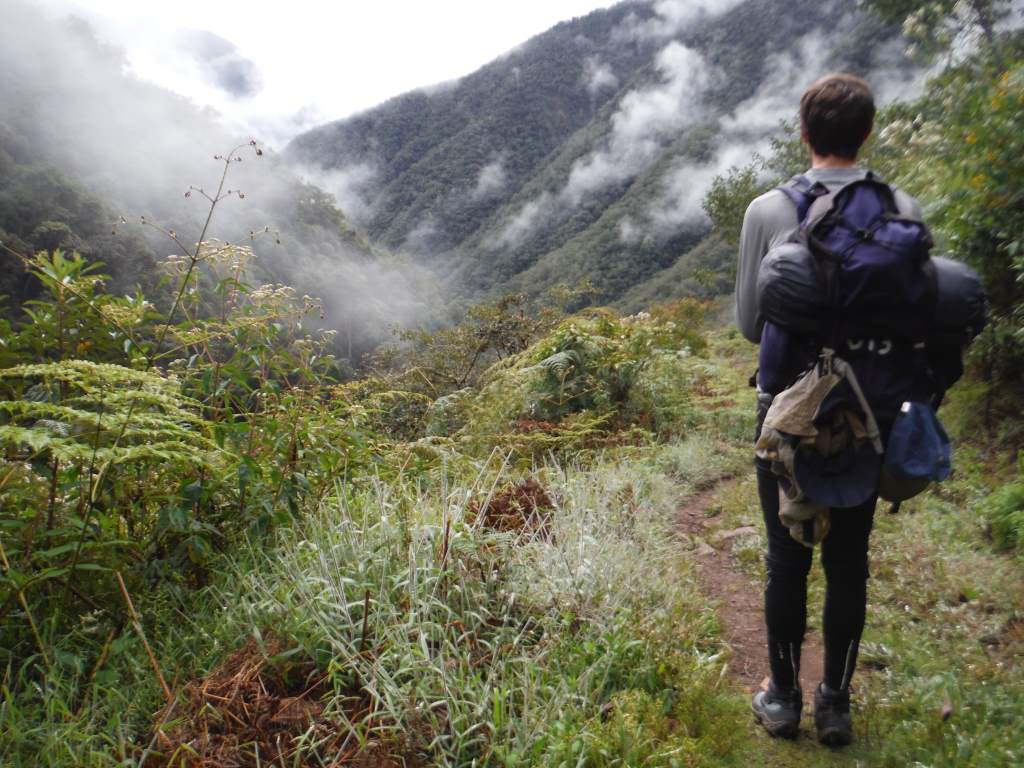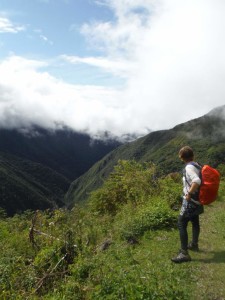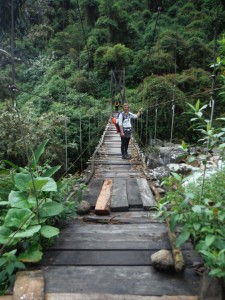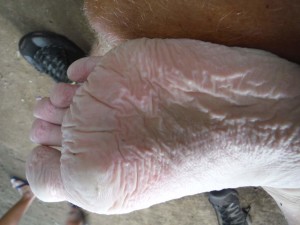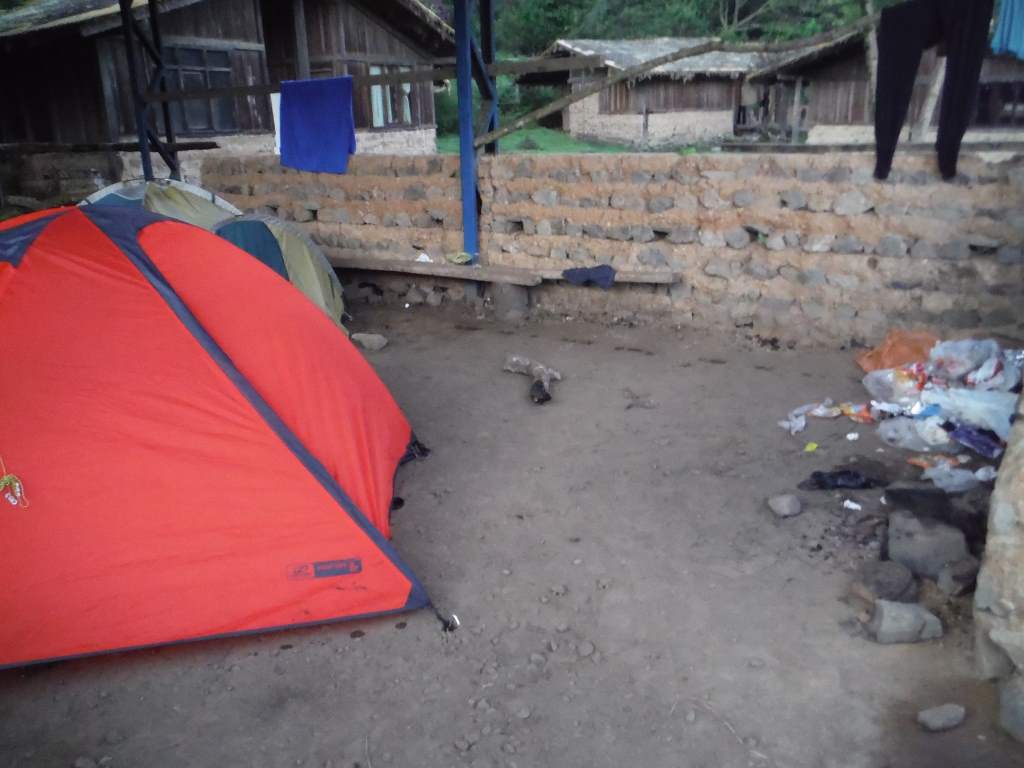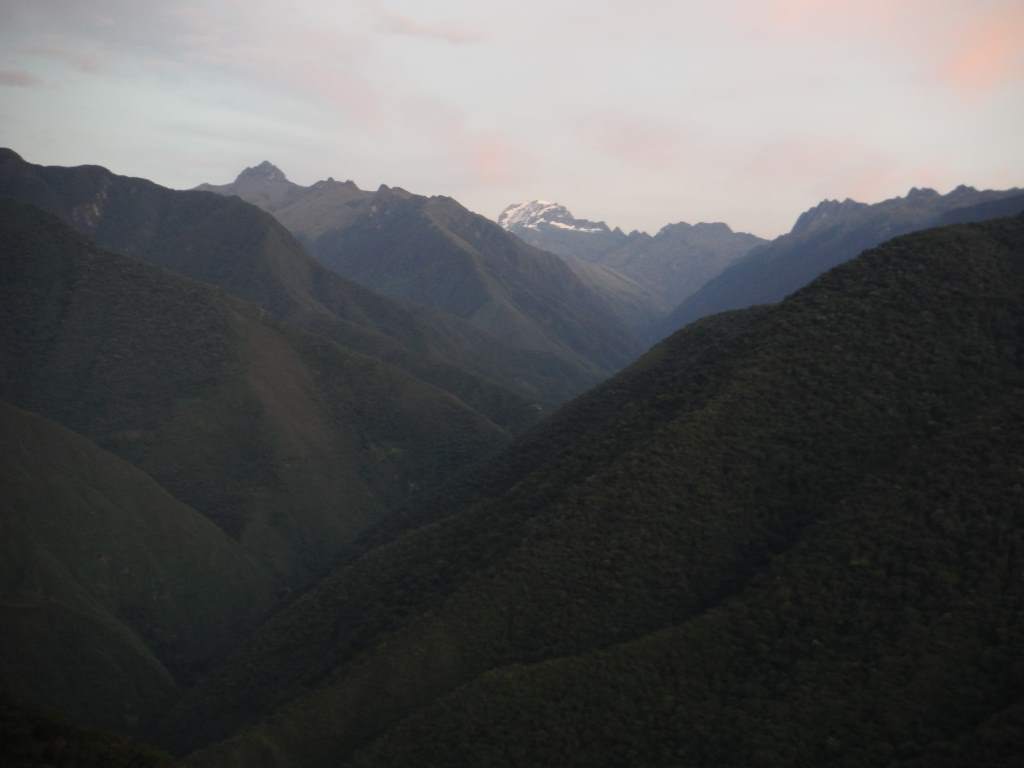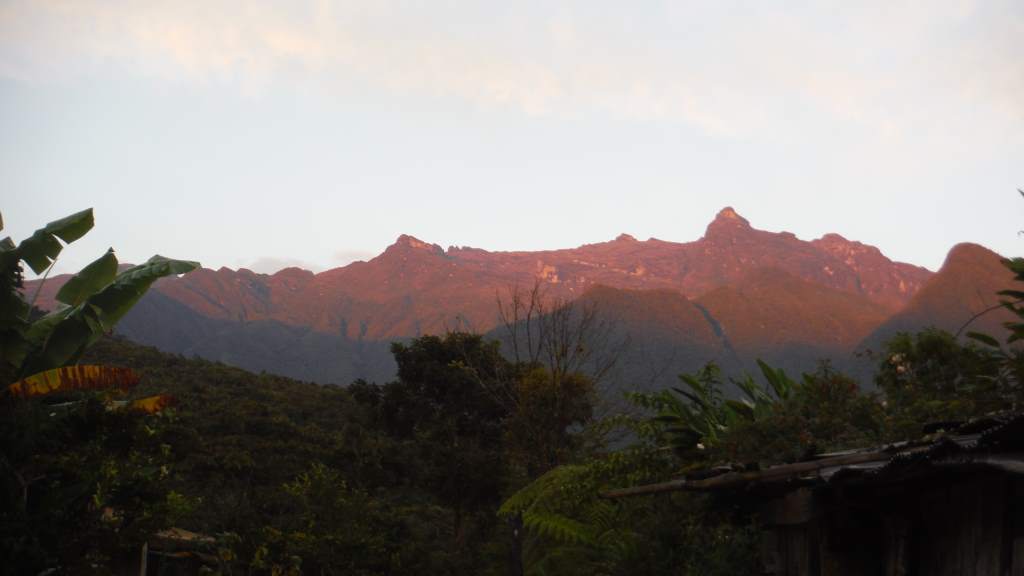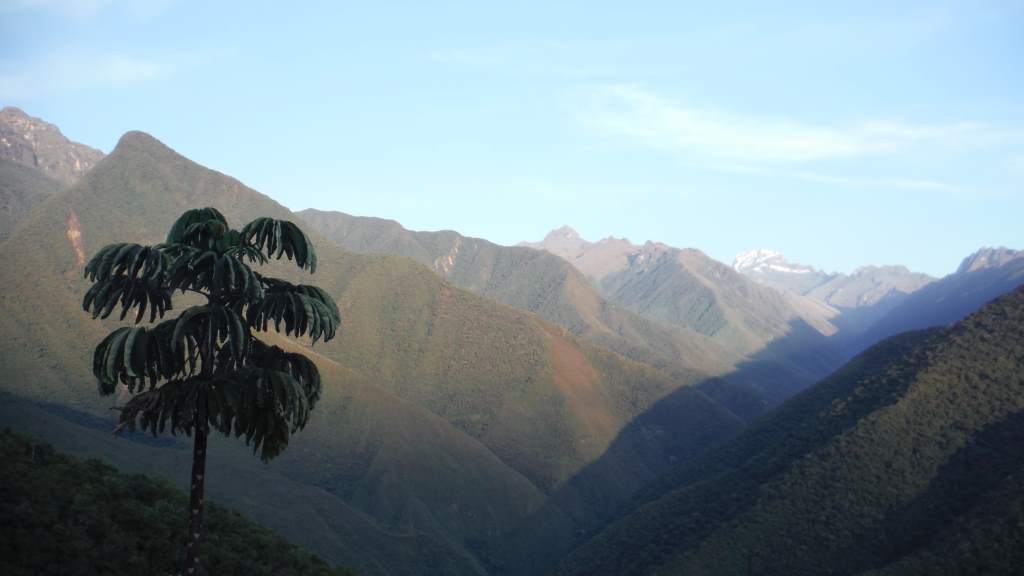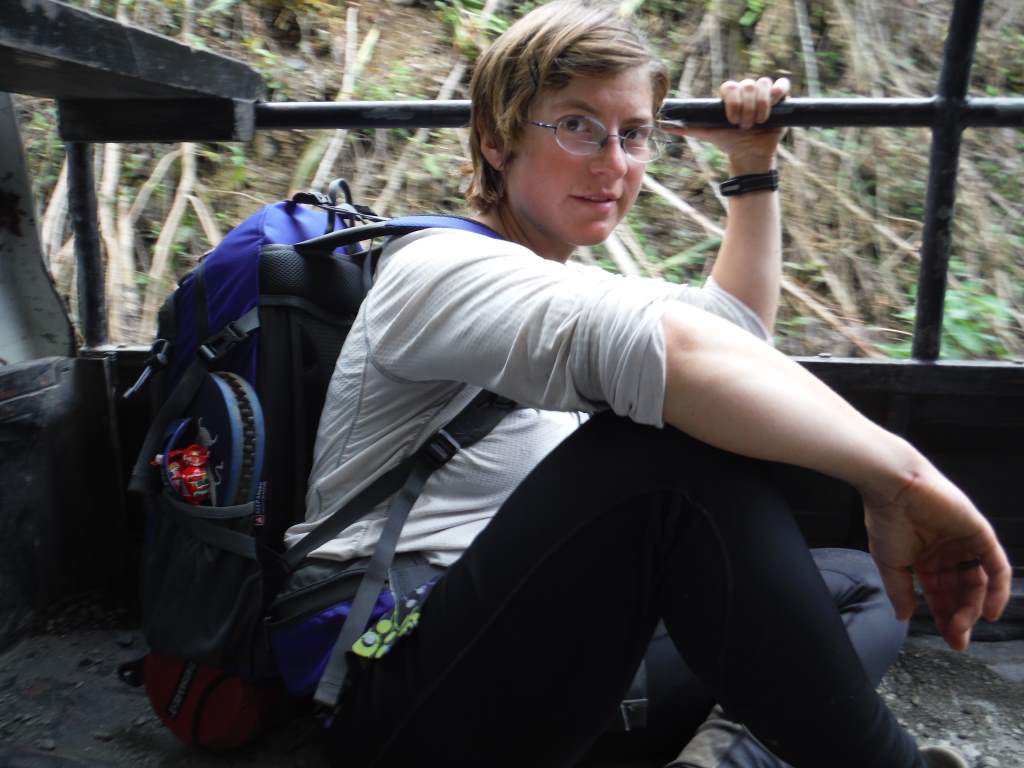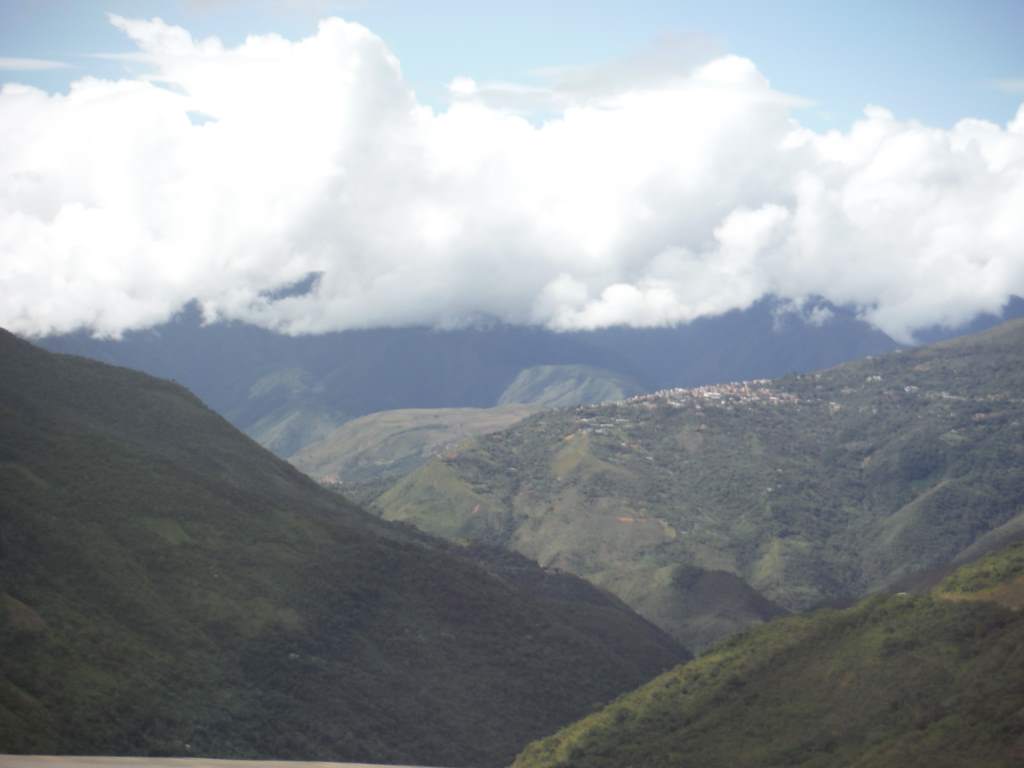Six days have passed since we left the city of Ayacucho, and it’s a little hard to believe just how much happened in the first three. On paper they should have been somewhat typical days, at least by Peru standards: climb uphill for about 4 hours, then descend. In real life, however, there was so much more adventure. We saw unexpectedly lovely mountains and rock formations, had a major mechanical problem, fought our way up and over a pass on a dirt road under construction, and had to find a desperation campsite in a Peruvian backyard. After these three exhausting and challenging days, it took us nearly three days of resting in the wonderful city of Huancavelica before we felt up to getting back on the road.
First, we left Ayacucho along a busy road that swept us down a long, gradual canyon. At the bottom it was HOT, and the evil biting sandflies were out in full force. Our turn onto a secondary road was completely unmarked, but luckily our new tablet has GPS so we didn’t miss it. Immediately the traffic died down and it felt like we were in heaven. The road was narrow, newly paved, and through wonderful scenery. The mountains were so different from those we had seen before. As we wound up the river valley we saw many different colors and rock types that reminded us of the Atacama desert in Chile.
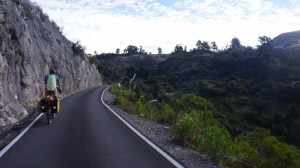 At the end of the valley the river went one way and the road went another. The road went up. It turned out to be the steepest climb we’ve done in months, and we were both exhausted by the time we reached the top. Midway up we asked a few groups of farmers about how much was left. One lady just told us ‘a lot’, and another group said we were ‘almost there’. The moral of the story is that asking is useless, we should just keep riding. Down the other side we found a really cute little town with a hidden little hotel under construction where we spent a peaceful night. Everyone in town seemed very interested in our trip and wanted to shake our hands.
At the end of the valley the river went one way and the road went another. The road went up. It turned out to be the steepest climb we’ve done in months, and we were both exhausted by the time we reached the top. Midway up we asked a few groups of farmers about how much was left. One lady just told us ‘a lot’, and another group said we were ‘almost there’. The moral of the story is that asking is useless, we should just keep riding. Down the other side we found a really cute little town with a hidden little hotel under construction where we spent a peaceful night. Everyone in town seemed very interested in our trip and wanted to shake our hands.
The next morning we awoke refreshed and ready to ride… until we noticed the flat tire on Jason’s bike. Crap. We began to put some air back into it, just to see how fast the leak was, when our bicycle pump failed. This was no gradual decline. It failed completely and permanently right there, in a tiny hill town in Peru. We pushed the bikes into the town center to see if anyone had a pump. No one in the village sold them, and no vehicle drivers had any either. Somehow, miraculously, Jason struck up a conversation with a lady from Lima who was visiting her mom. She had a pump! We had a great chat with her as we changed out the tube and successfully re-inflated the tire. The rest of the day was spent studiously avoiding all road debris, since we couldn’t get a new pump until the next town.
The road was truly lovely all day. It was a dream to ride on, there was nearly no traffic, and the scenery was great even by Peru standards. See pictures.
That night we managed to find a new pump in a hardware store. It is pretty basic, but definitely does the job. When we bought it the girl working there (who appeared to be about 10 years old) didn’t have any change, so we had to do all our other shopping first. This is actually a common problem here. No one seems to have change, even for small bills. Oh well, we’re getting pretty used to it.
It was the third day that nearly did us in. This stretch of road was not only dirt, but also under construction. We were re-routed on a steeper, rougher detour for the worst of the climbing, and then had to share the road with heavy machinery for most of the afternoon. Jason had had a rough night so he wasn’t feeling very well. Additionally, he was very grumpy from the bumpy road. This obviously didn’t make for very fast or pleasant progress. I ended up taking two of his bags to help him keep moving, but there are no pictures of this since he was too grumpy to take pictures. I swear, I’m not sore about it or anything…
As we neared the top of the last pass for the day it was about 4 o’clock and there was a big storm moving in. I was scared of being caught in the storm, and it was very rough to keep moving. The rain started within a mile of the summit, and it only got worse on the other side. Additionally, it was cold, very cold. We got as bundled up as possible and started downhill. We had planned to reach the city in the valley, but we couldn’t get up any speed at all because of the treacherous and slippery road conditions. We watched the sun set as we made our slow progress downhill.
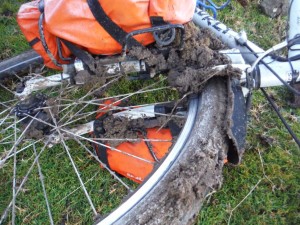 The construction and rain combined to form a thick layer of slick mud. Our wheels got covered, the fenders got jammed. At one point just as it was getting dark my back wheel skidded and I almost fell. From here, we walked to the next group of houses. Jason’s wheel got so mudcaked that it completely seized and stopped rolling. No one seemed to live at the houses we tried, and the one older lady we found nearby didn’t seem to understand that we wanted permission to camp. It was getting cold and dark fast though (we were at nearly 13,000′), so we found a hidden spot in an abandoned yard and crawled in the tent. That night we had avocado sandwiches in the tent and listened to the construction continue until midnight. It was cold and uncomfortable, but we were safe.
The construction and rain combined to form a thick layer of slick mud. Our wheels got covered, the fenders got jammed. At one point just as it was getting dark my back wheel skidded and I almost fell. From here, we walked to the next group of houses. Jason’s wheel got so mudcaked that it completely seized and stopped rolling. No one seemed to live at the houses we tried, and the one older lady we found nearby didn’t seem to understand that we wanted permission to camp. It was getting cold and dark fast though (we were at nearly 13,000′), so we found a hidden spot in an abandoned yard and crawled in the tent. That night we had avocado sandwiches in the tent and listened to the construction continue until midnight. It was cold and uncomfortable, but we were safe.
In the morning we awoke to ice everywhere. The mud on our bicycles had frozen solid, and I had a flat tire. We almost despaired, but instead we set the bikes in the sun. As the mud thawed we knocked it off with tent stakes, and I pumped enough air in my tire to limp the last 5 miles downhill into town. It was with great relief that we entered the city! After securing a hotel we took our bikes to a carwash to get them cleaned, and then we crawled into bed for a long nap.
It really did take us nearly three rest days to recover from all that excitement! Luckily, Huancavelica proved to be a great place to spend a few days. In that whole time we only saw one other tourist. The locals were exceedingly friendly, the city was lovely, and there were many events to keep us entertained. We could have used some good espresso and some waffles, but hey, we know we can’t have everything.
Now we are taking the main route to the city of Huaraz, where we hope to do some hiking in more of Peru’s legendary mountains. With a bit of luck, the next week of riding will be substantially less eventful!
Here are a few more pictures that somehow didn´t make the cut for the narrative:
